LG OLED B4 is an exceptionally versatile device in the semi-premium category. For how else could one describe an OLED television that is so well-priced, and whose price, as history shows, will quickly fall? Ideal blacks and contrast are two things that inevitably mesmerise, and we are certain that anyone who has owned a device with this panel will not be able to return to LCD units. The brightness results of the television in HDR content may seem rather low; however, in this case, thanks to this particular panel, they will appear optically much higher. It is worth noting their stability and uniformity in practically every scene. In this case, a minor downside is the brightness of a full-frame shot filled with a large amount of white. However, we do not believe this to be a serious problem, as there are not many such instances anyway. The factory colour reproduction also deserves praise, which in our specimen is very decent, but one cannot help but remember how beneficial calibration has been for the image, allowing the director's intentions to be conveyed fully. LG B4 will be an excellent choice for all kinds of gamers, as well as sports enthusiasts. The former will certainly appreciate the rich support in the form of all the conveniences stemming from the HDMI 2.1 standard. Meanwhile, the latter will benefit from the advanced motion smoothing with multi-step adjustments. And lastly, one cannot overlook the convenience provided by the remote control with a built-in gyroscope, allowing it to function like a mouse. The WebOS system, which we will navigate, is extremely smooth and responsive. It offers a multitude of applications, which will be more than sufficient for the vast majority of users. The heart of the LG B4 television is the advanced Alpha processor, responsible for the smoothness of the image and advanced signal analysis. In summary: who is the LG OLED B4 for? It is the perfect device for those expecting the highest possible image quality within a given budget, but not only that. The LG B4 stands out significantly above its competition at this price point, which cannot offer such high-quality images.
- Matching (Score)
- Our verdict
- TV appearance
- Where to buy
- Contrast and black detail
- HDR effect quality
- Factory color reproduction
- Color reproduction after calibration
- Smoothness of tonal transitions
- Image scaling and smoothness of tonal transitions
- Blur and motion smoothness
- Console compatibility and gaming features
- Input lag
- Compatibility with PC
- Viewing angles
- TV efficiency during daytime
- Details about the matrix
- TV features
- Apps
- Playing files from USB
- Sound
LG 55 B4 vs Hisense U7Q
Direct compare
B46 / B42 / B43
U7Q / U78Q

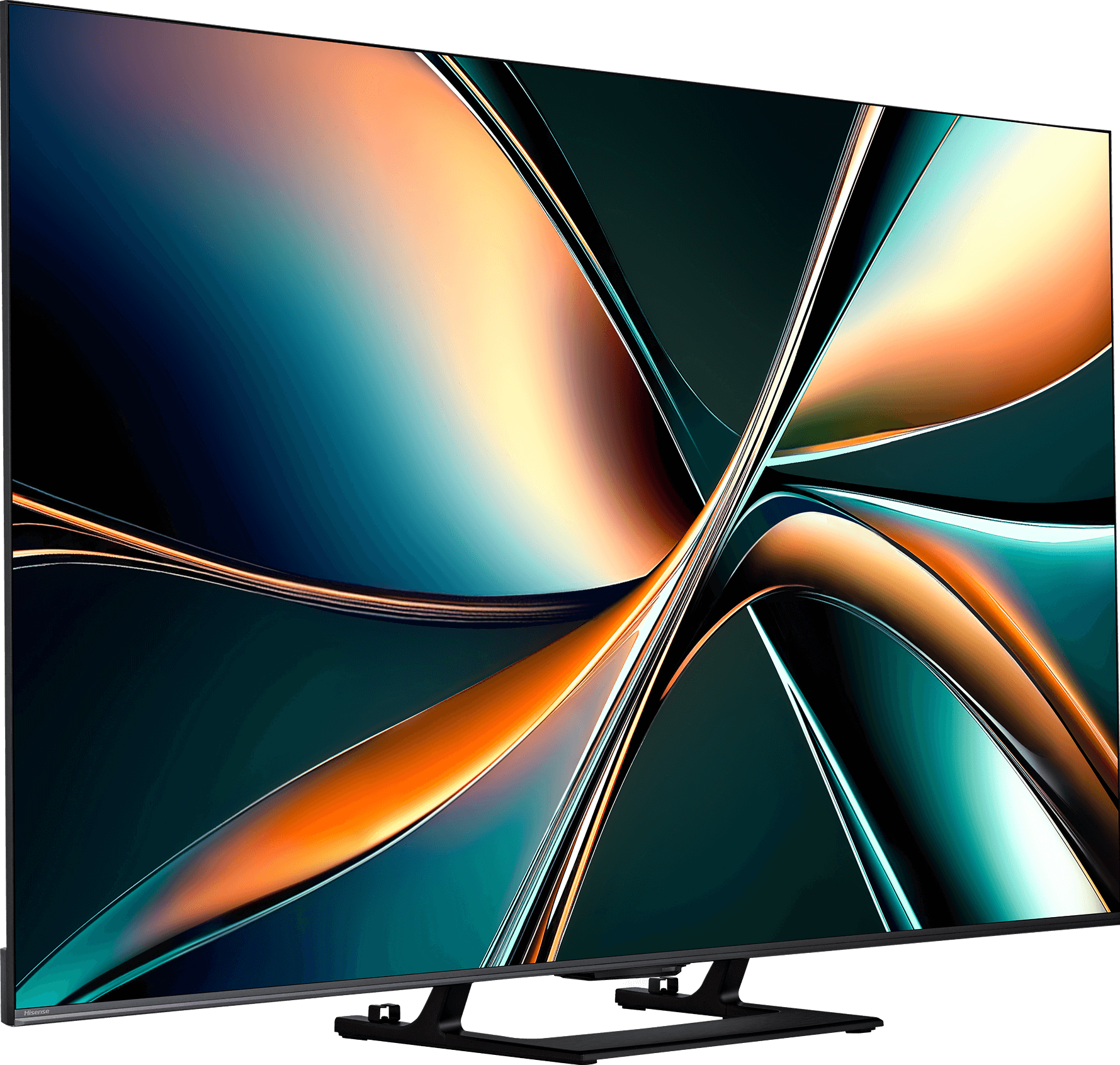
Panel type: WRGB OLED
Resolution: 3840x2160
System: WebOS
Model year: 2024
Complete the survey to find out the result

Panel type: LCD VA
Resolution: 3840x2160
System: VIDAA
Model year: 2025
Complete the survey to find out the result

Overall rating
8.1
7.2
Movies and series in UHD quality
8.1
6.7
Classic TV, YouTube
8.8
6.8
Sports broadcasts (TV and apps)
8.6
6.5
Gaming on console
9.3
8.0
TV as a computer monitor
7.6
8.6
Watching in bright light
5.7
6.2
Utility functions
9.0
8.9
Apps
8.7
7.7
Sound quality
7.1
7.2
Complete the survey to find out what fits your preferences
Advantages
Reference colour mapping after calibration
Very good image compliance with the director's intentions
Excellent compatibility with consoles and PCs
Advanced motion smoothing system
Deep and vivid image
Advanced WebOs system and "mouse" remote control
Great contrast and deep blacks
Very good fluidity of tonal transitions (close to reference level)
High brightness
Support for 4K 144 Hz and even 240 Hz in Full HD
VRR, ALLM, G-SYNC – a complete package for gamers
Low input lag
Pleasant sound with light bass
Many classic TV features built into the VIDAA system
Disadvantages
Visible tonal transitions
No support for HGiG (makes setting HDR on consoles difficult)
Brightness management issues
Poor viewing angles – typical for VA panels
Closed VIDAA system – lack of certain applications
Our verdict
The Hisense U7Q is one of the most interesting Mini-LED televisions in its price segment, clearly demonstrating that Hisense is beginning to make a mark in the market not only through its price-to-performance ratio but also due to its increasingly refined picture quality. Let's start with what truly impresses: the contrast and black levels are at a level that not long ago was unattainable in this price range. Combined with smooth tonal transitions, solid brightness, and a fast 144 Hz panel, the U7Q becomes a television that excels in both movies and gaming. Gamers will find almost everything they could expect here – variable refresh rate (VRR) support, automatic low latency mode (ALLM), very low input lag, and even 240 Hz in Full HD. All of this makes the U7Q compatible with both next-gen consoles and PCs. However, there are some weaker points. With HDR content, one might say: "untapped potential" – you might ask why? The television, due to its algorithms, dims small bright elements or over-emphasises them, which can ruin the viewing experience. There is also a lack of support for HGiG, a feature that would allow for better calibration of the console with the television regarding HDR. In summary, briefly – the Hisense U7Q is a very versatile and complete television that has its imperfections but makes up for them in many key aspects. For gamers, for the occasional movie viewer, for someone looking for good equipment for everyday use – it is one of the most cost-effective offerings in 2025. You just need to know what compromises you are signing up for – and then it will be hard to be disappointed.
TV appearance





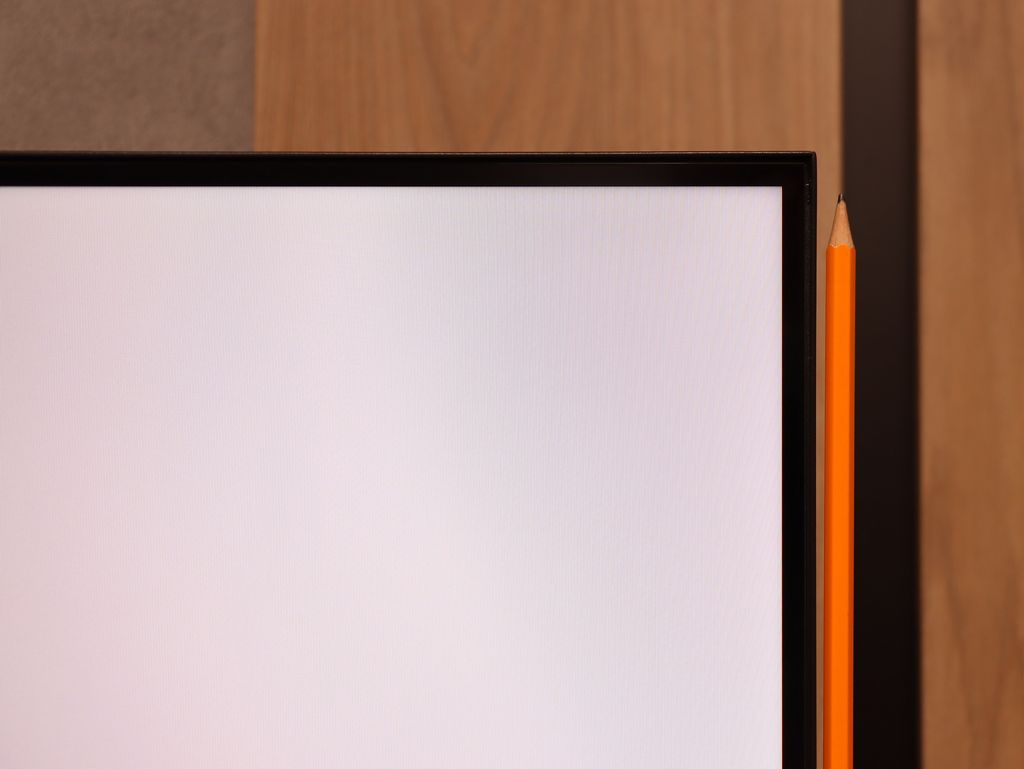
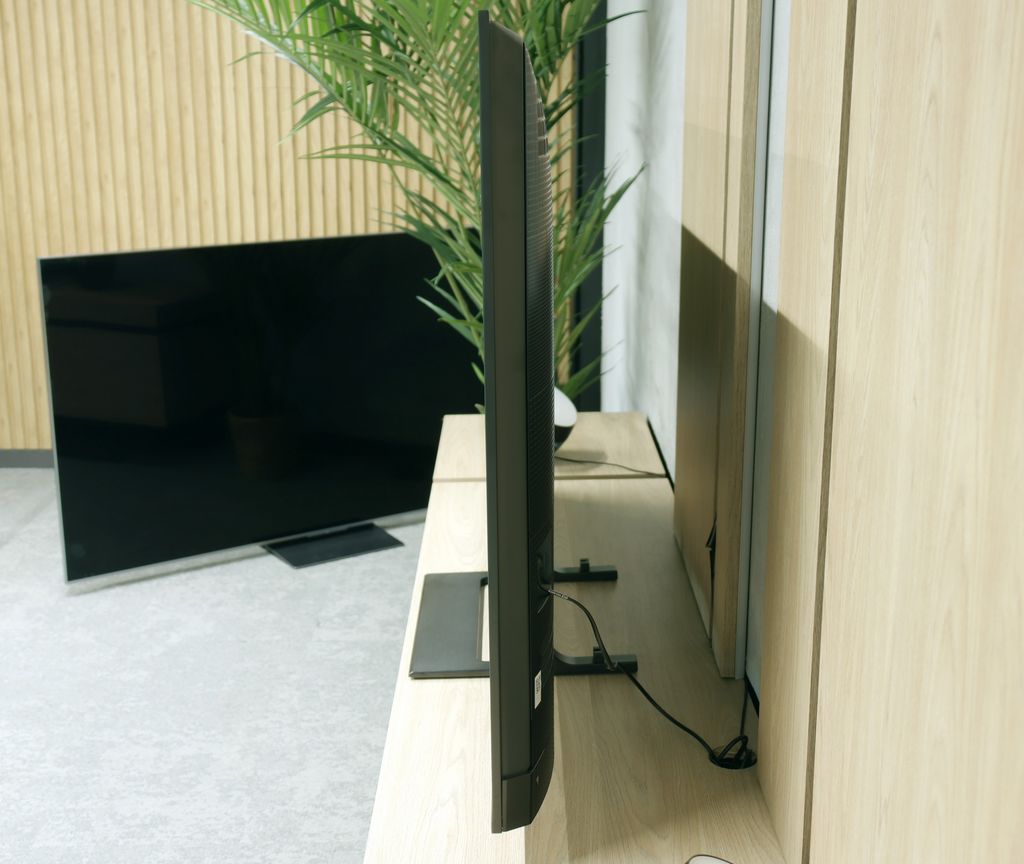
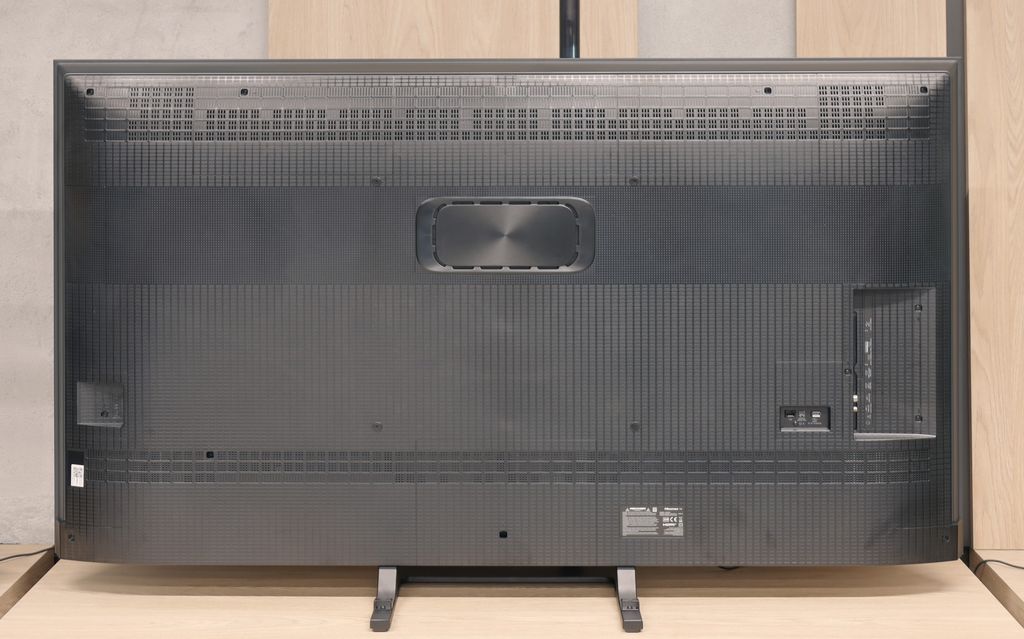
Contrast and black detail
10/10
7.5/10
Local dimming function: Yes, number of zones: 220 (10 x 22)
Contrast:

Result
∞:1

Result
∞:1

Result
∞:1

Result
∞:1

Result
∞:1

Result
278,000:1

Result
28,800:1

Result
11,100:1

Result
10,800:1

Result
6,250:1
Halo effect and black detail visibility:


LG B4 uses OLED panels produced by LG Displays. The use of this type of panel provides us with perfect contrast and black levels. With such conditions, the picture is incredibly vivid and one might even get the impression that it is three-dimensional. The series of the manufacturer with the letter "B" has always been an ideal solution for those seeking very good picture quality while not wanting to pay extra for features that are only available in higher series. Therefore, these models have become something of a dark horse in this price range, as their advantageous pricing primarily competes with Mini LED televisions. It is not difficult to say that these models have won these battles due to the absence of characteristic flaws associated with LCD receivers with multi-zone backlighting, such as blooming/halo effects or dimming of images containing fine bright details. And as we can see in the test scenes from the films "Oblivion" and "Sicario 2," the fidelity is at the highest level. Looking at the first one, we see a spectacular play of lights that, despite their brightness, are perfectly separated from one another. Even a more challenging scene with a helicopter poses no problem for LG B4, showcasing a wealth of details and a unique colour grading specific to this title.
The U7Q is a television with Mini-LED backlighting – just like the PRO version. The difference? The version without the suffix simply has fewer dimming zones. In our 65-inch model with a VA panel, we counted 220 of them. And although this doesn't make as much of an impression as in the U7Q PRO, it still looks very good on paper for this price range. Alright, but how does it perform in practice? Surprisingly well. The contrast in the U7Q can reach as high as 300,000:1, which gives a really solid black effect. In many scenes, it's hard to find fault – the picture has depth, and the highlights are well separated. Of course, Mini-LED is not OLED – so there are certain limitations. In very challenging scenes with a lot of dark details, the television sometimes either "eats" them, leaving a nice black, or slightly brightens the background, which can cause a halo effect. This is normal in this technology, and one must take it into account. Despite these minor drawbacks – the contrast in the U7Q performs really well.
HDR effect quality
6.3/10
4.6/10
Luminance measurements in HDR:

Result
664 nit

Result
650 nit

Result
677 nit

Result
662 nit

Result
410 nit

Result
521 nit

Result
160 nit

Result
351 nit

Result
98 nit

Result
674 nit
Scene from the movie “Pan” (about 2800 nits)

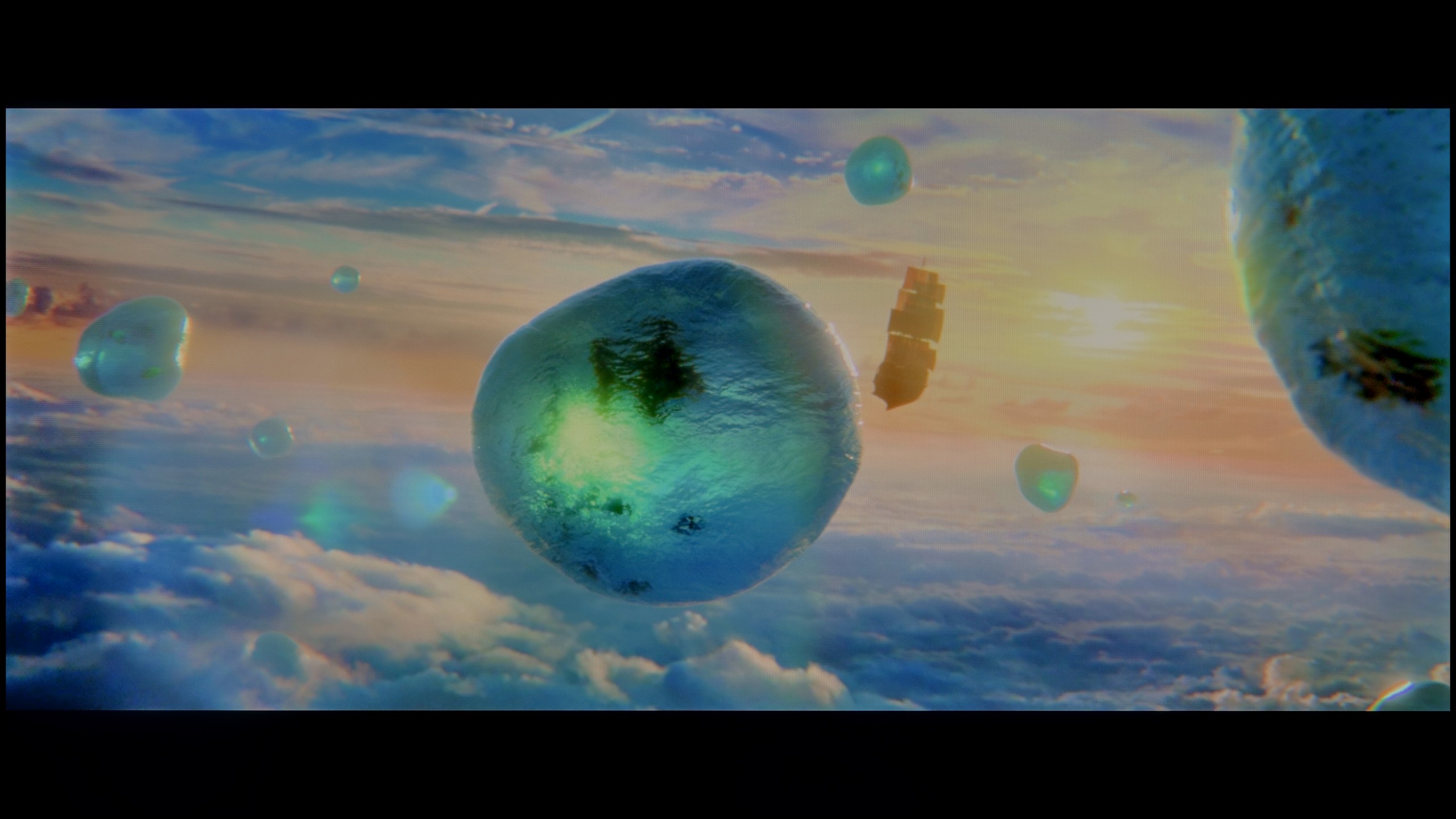
Scene from the movie “Billy Lynn” (about 1100 nits)

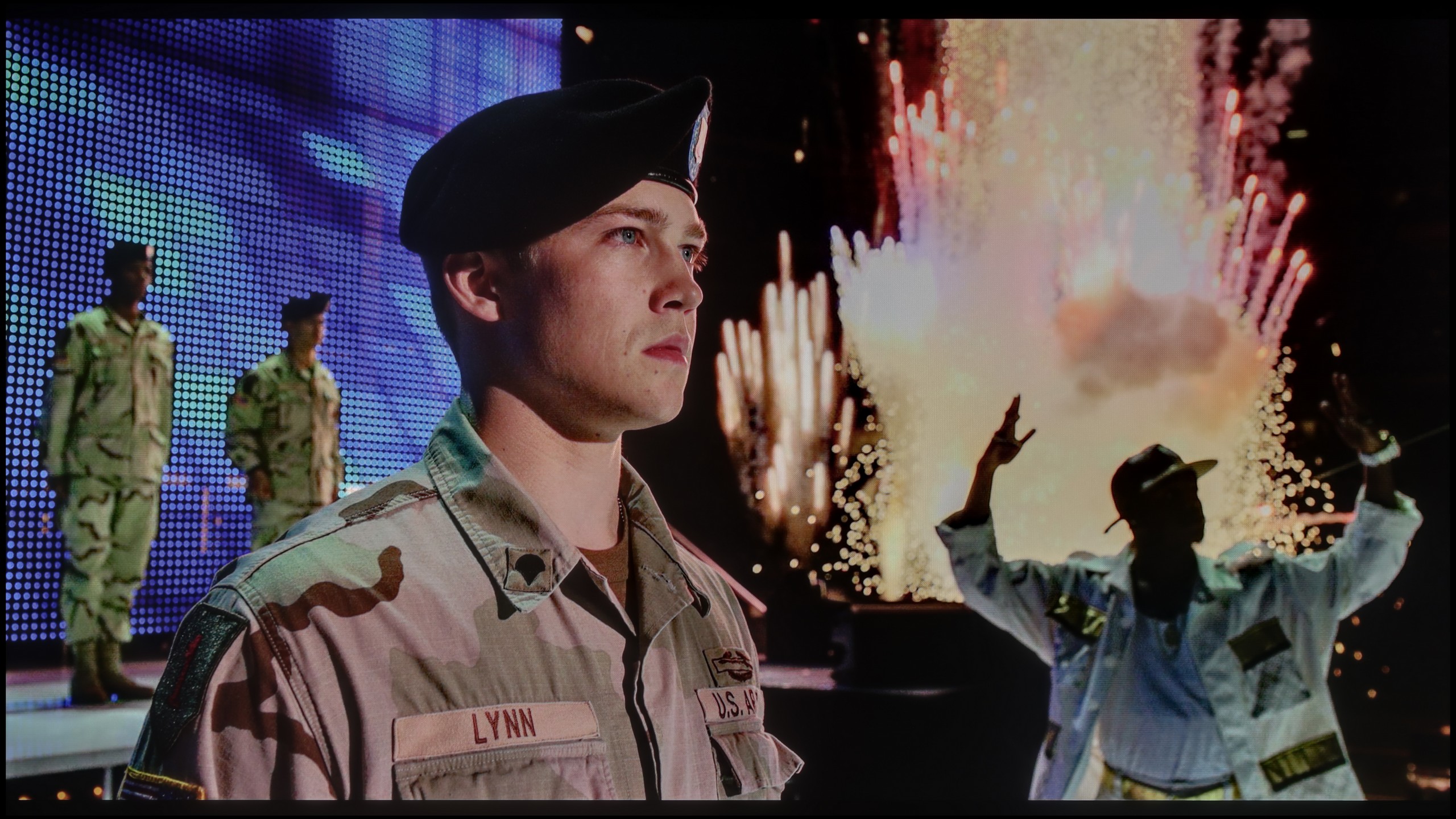
Static HDR10


Dynamic: Dolby Vision
Dynamic: Dolby Vision


HDR luminance chart:
Hisense U7Q
Luminancja HDR
Luminance of RGB colors
LG 55 B4
Luminancja HDR
Luminance of RGB colors
The brightness results in HDR materials for LG B4 are very good. It is true that none of them exceed 1000 nits, although the stability of luminance is excellent and looks practically the same in every scenario. The only moment where the tested television performs worse is the last of the scenes, although this should not be surprising. Large frames filled with a lot of white have always been, and probably will continue to be, somewhat of a weakness for OLED televisions. However, the combination of perfect contrast, black levels, and brightness of LG B4 allows for a full experience of the HDR effect. Additionally, the incredibly high coverage of the DCI-P3 colour gamut deserves recognition, reaching 99%. This makes the colours look incredibly vivid and striking.
Since the algorithms responsible for blacks are performing quite well, we expected a similarly good effect regarding brightness and overall HDR quality. Unfortunately – here we have to disappoint you a bit.
The U7Q is a sufficiently bright television – under the best conditions, it can achieve around 800 nits, which indeed impresses on some scenes, especially in scenes like those from the film The Meg. Bright areas can shine, and the HDR effect is noticeable. The problem arises when there are very small, bright elements on a dark background – for example, in Sicario 2 or in the second scene from the film Life of Pi. In such moments, the dimming algorithms work too aggressively. Yes, the blacks look great then, but the brightest points can almost completely disappear, causing the HDR effect to vanish and the details to be barely visible. It's just the nature of this technology in this price segment.
As a consolation, it's worth mentioning that the U7Q is marketed as QLED (in practice, a PFS layer is used, which works very similarly), and it is indeed capable of displaying a wide colour palette – a DCI-P3 coverage of around 94% is a very good result for this class.
Factory color reproduction
8.4/10
6.3/10


Factory Mode
After calibration
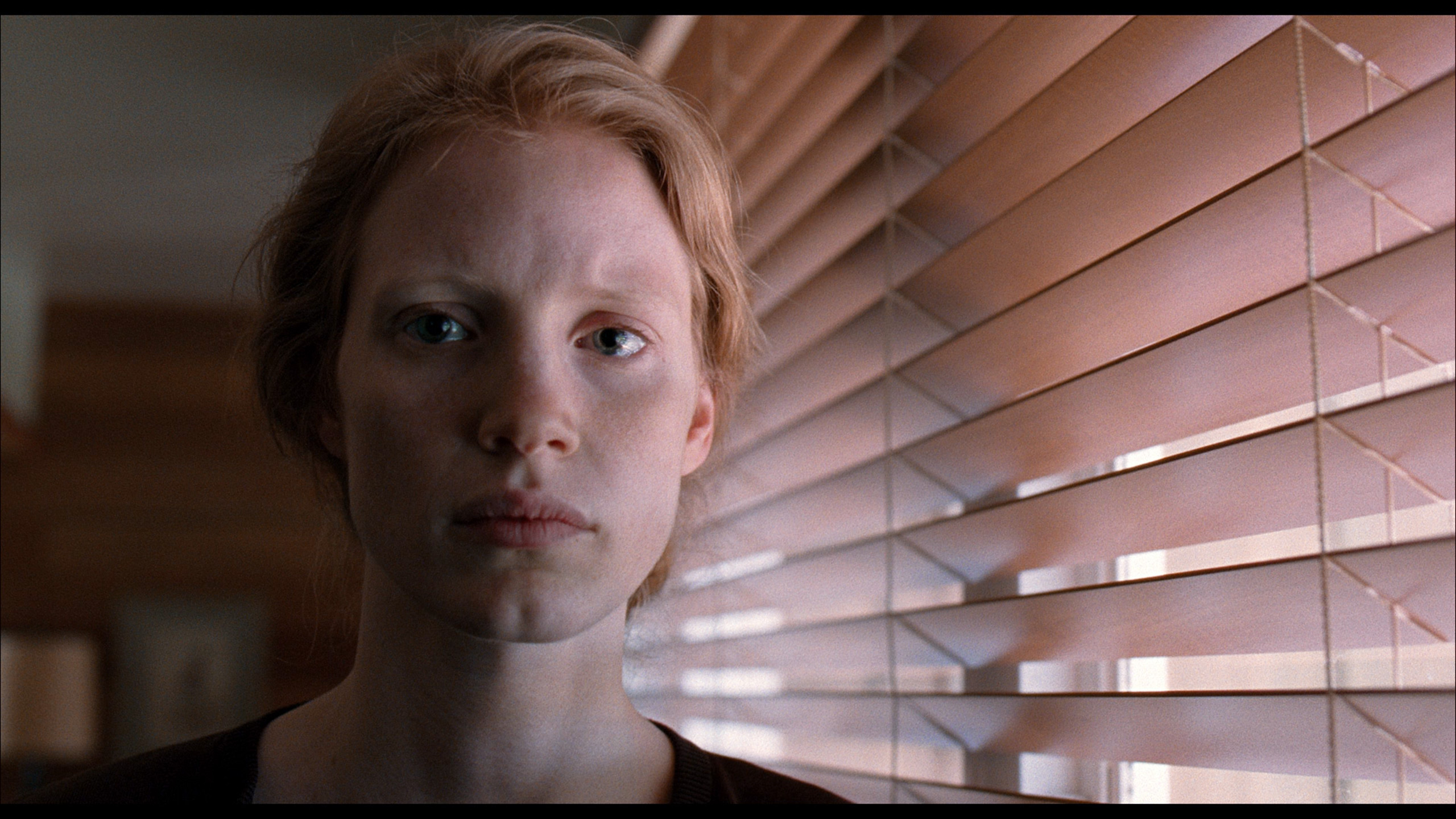
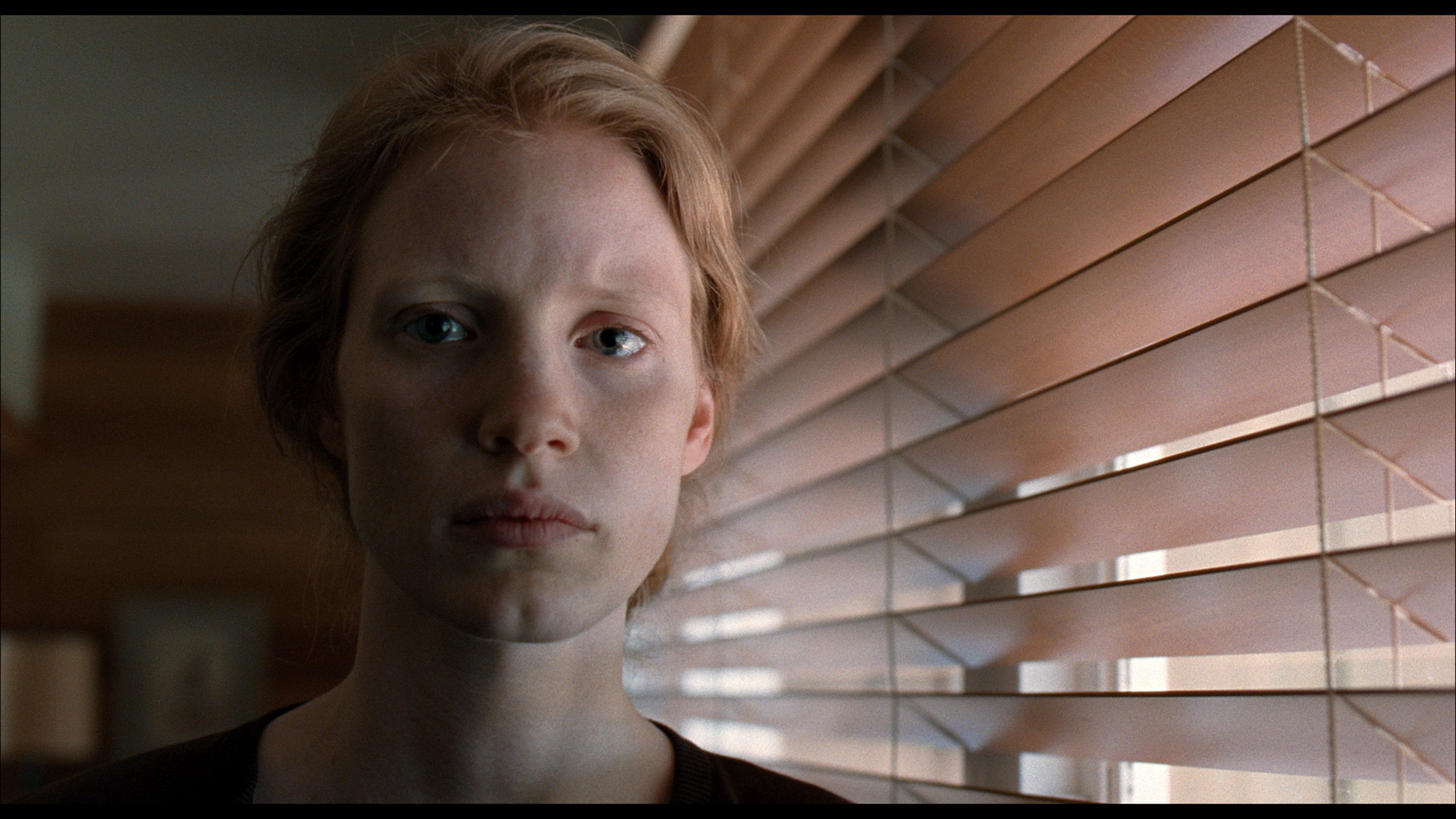
Factory Mode
After calibration
The best factory mode prepared by the manufacturer is "Filmmaker," which is exactly what we used throughout the entire testing procedure. We must admit that the unit we received out of the box had quite good colour reproduction. The biggest problem in both SDR and HDR content turned out to be white balance. In the former, a strong red hue was evident, causing the displayed image to have a pronounced yellow tint, particularly noticeable on skin tones and whites. In higher quality materials, this colour was also accentuated, but due to a lack of blue, there were also signs of green visible. Apart from these issues, we also encountered problems with grayscale and the colours themselves.
We tested the U7Q in the best possible picture mode, which is Filmmaker Mode. This is the mode that is supposed to provide the most "filmic" and creator-intended experience – right out of the box. Unfortunately… even this professionally sounding name does not guarantee a perfect picture.
In our unit, the problem lay in the incorrectly set white balance. Both in HD and 4K content, the picture had too much blue and red, which caused the screen to take on a slightly rosy tint. It didn't look terrible, but it was noticeable – especially in bright scenes and white backgrounds. This alone could perhaps be forgiven, but the biggest problem is managing brightness in HDR content. The EOTF curve from measurements confirms what we saw earlier during scene tests: the television can overly darken the smallest bright elements, causing them to nearly disappear, or on the contrary – excessively brighten the brightest ones, which affects the naturalness of the picture.
Color reproduction after calibration
9.3/10
7.4/10

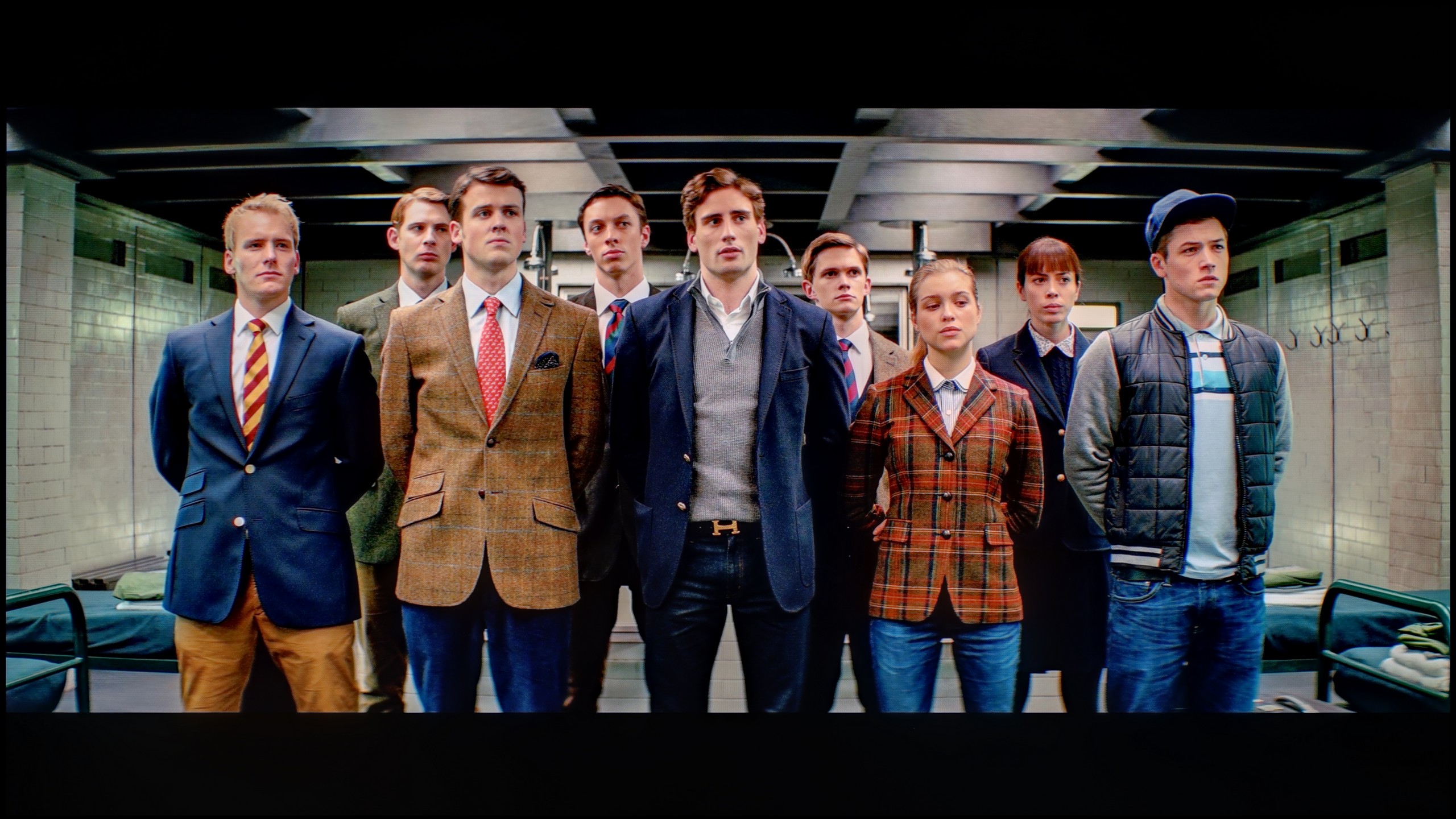

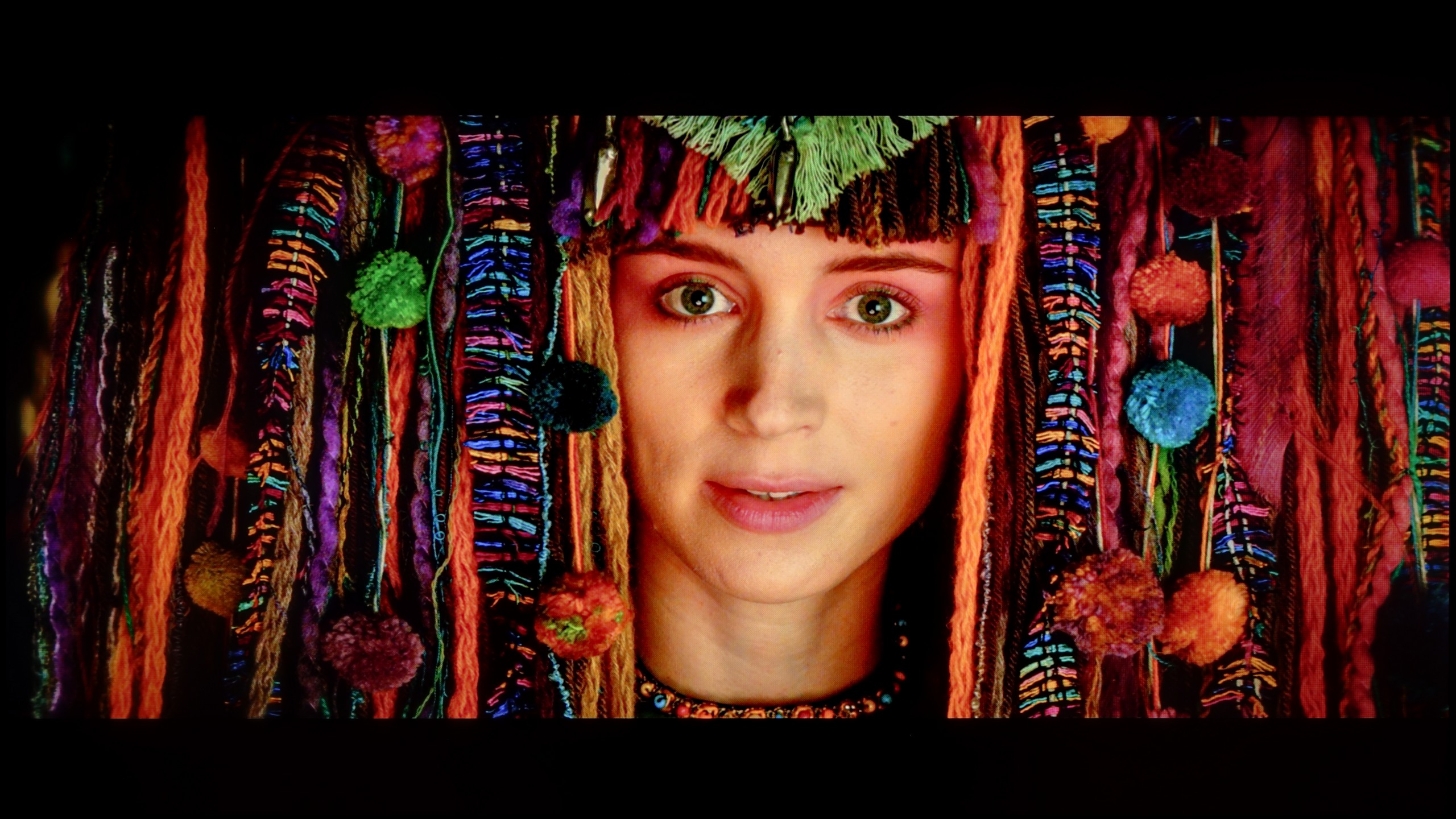
LG B4 has been providing very advanced calibration tools in its televisions for years. We can even say that as the only manufacturer on the market, it allows for such deep intervention in image adjustment. It is thanks to these tools that we were able to calibrate the device so well. Evidence of this is the extremely low deltaE errors, which can be said to be at a reference level. Both SDR and HDR materials now look exactly as intended by the film director. It is no coincidence that televisions of this brand are most often used as preview screens for various graphic or post-production studios.
Thanks to specialised tools, we managed to correct the colour quality in SDR content to nearly perfection. In materials with lower dynamic range, the delta E errors dropped below 0.5, which can be regarded as an almost reference result. The picture on television, YouTube, or classic Full HD looks really very good after calibration. Alright – but where did we not manage to improve the image so easily? Primarily, it concerns HDR quality content. Although we managed to somewhat 'tame' the white balance and eliminate pink tints in most scenes, unfortunately, we no longer had full control over brightness management. We set the local dimming settings according to the best observations – SDR: Medium, HDR: High – but the U7Q still did everything a bit its own way. There were still cases of excessive dimming or brightening of details that calibration simply could not eliminate. And although the overall reception of the content is significantly better, one must reckon that the U7Q will always have something to say at the end with an 'but'.
Smoothness of tonal transitions
7.4/10
9.9/10

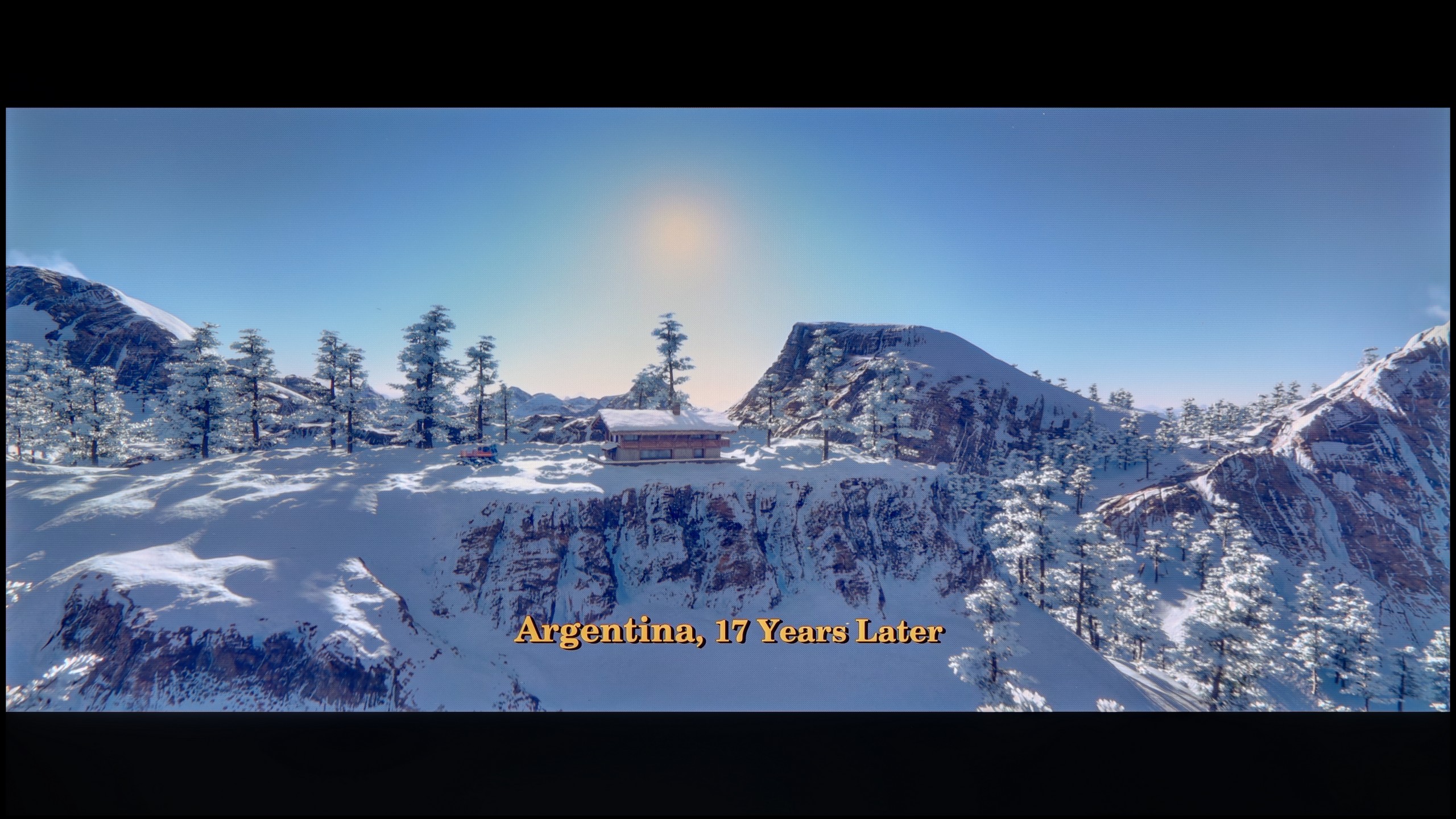

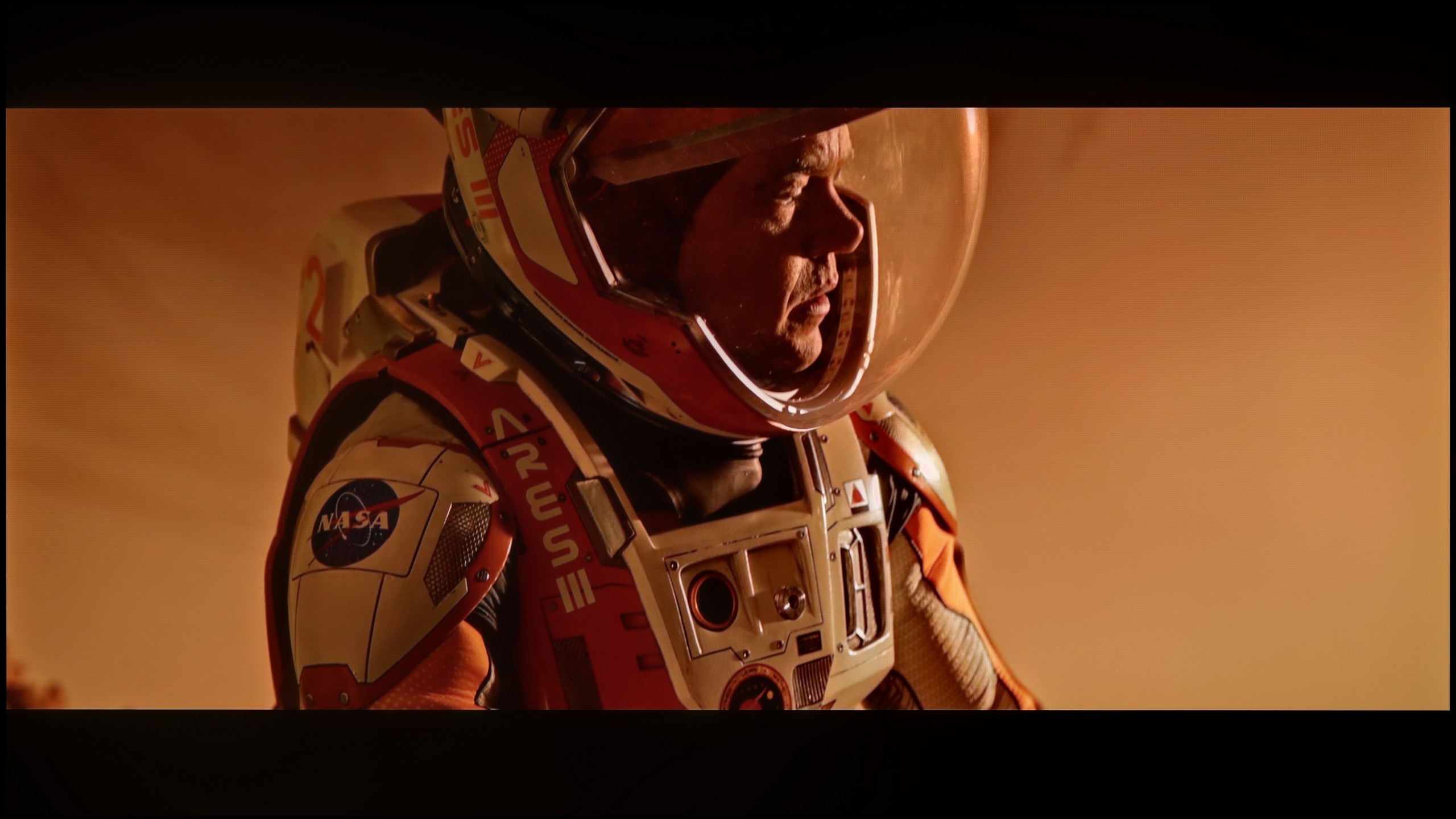

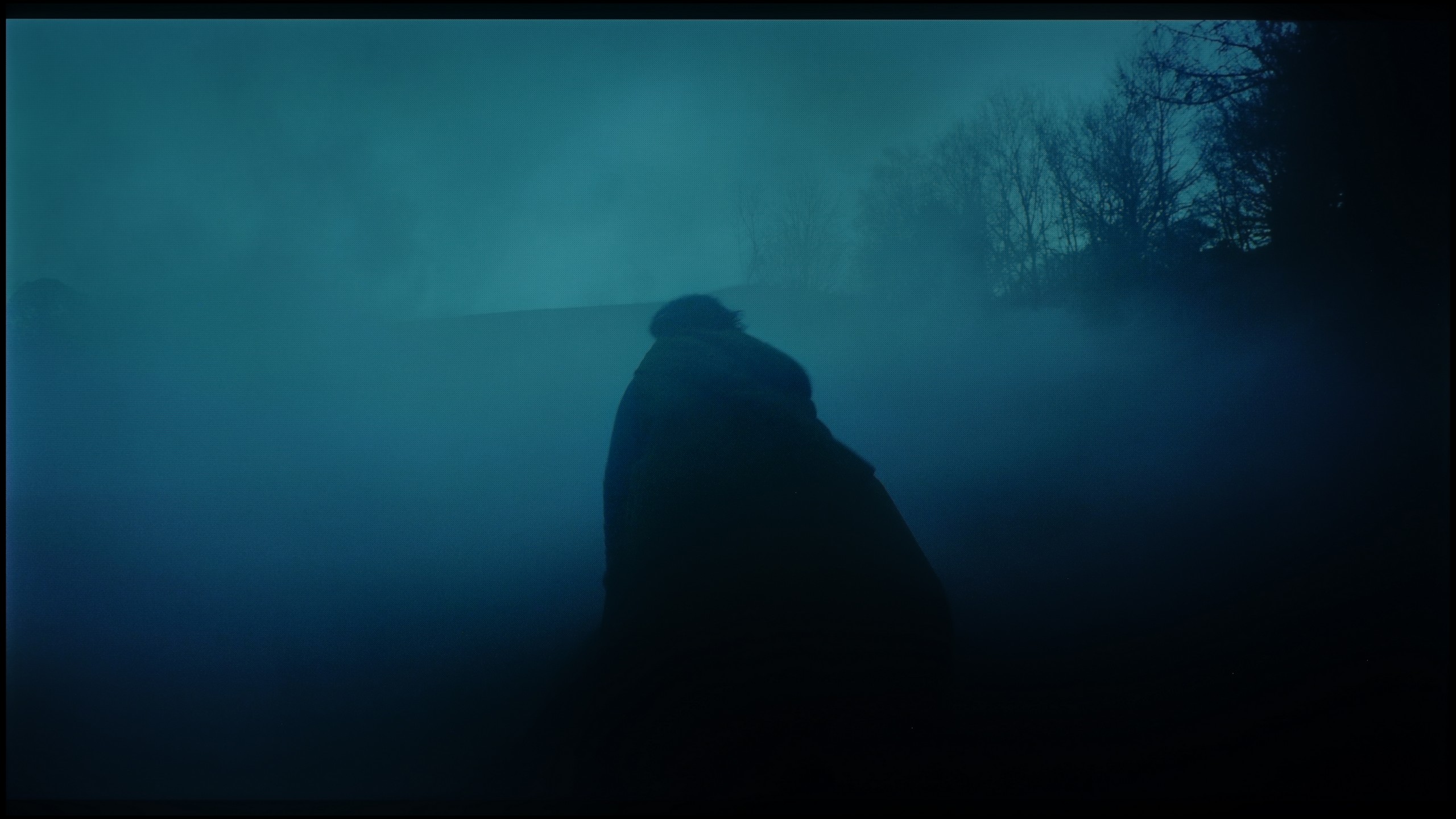






The fluidity of tonal transitions, often overlooked in various tests on competing portals, is an equally important aspect of image quality assessment. It is particularly important when watching material that features a wealth of colours and many intricate effects, where textures blend. This often leads to the so-called banding of colours, which is a lack of smooth gradation. The tested television handles tonal transition smoothing quite well. However, it is worth noting that it has its weaker moments, such as a bright coloured sky in the film "Kingsman" or "The Martian". Nevertheless, these are not aspects that detract from the viewing pleasure. Therefore, we positively assess the quality of tonal transitions in LG B4.
The U7Q performs remarkably well when it comes to tonal transitions – we can confidently say that it is at an almost reference level, which is why this television receives one of the highest possible ratings in this category from us. Colour blending is smooth, clean, and without visible bands. In the majority of scenes, everything looks simply perfect, and any minor imperfections may only appear in very specific shots – although we hardly noticed any during our tests.
Image scaling and smoothness of tonal transitions
7.9/10
6/10
Smooth transition function

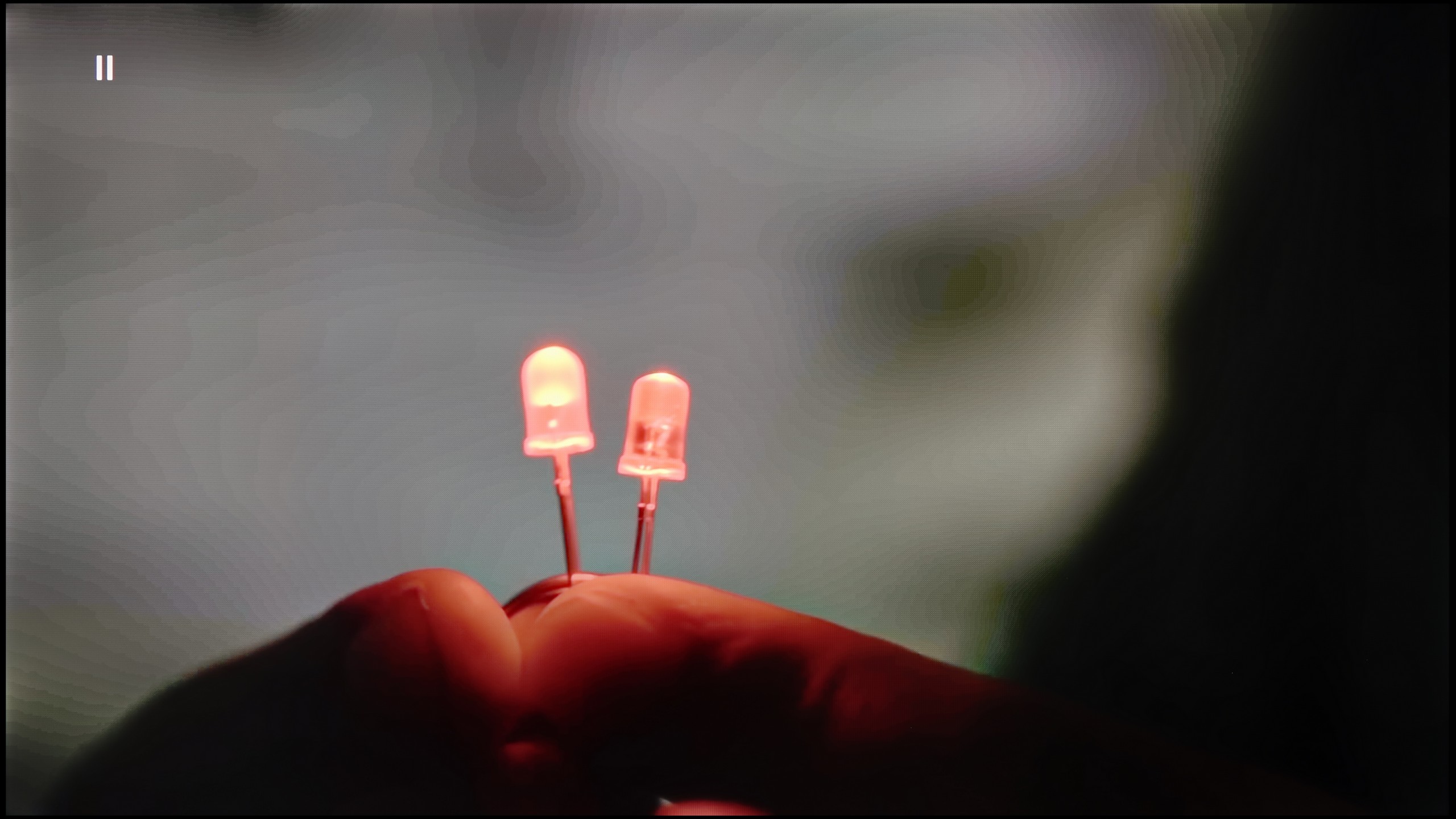
Image without overscan on the SD signal


In this paragraph, we will take another look at the function for smoothing tonal transitions, but we will also check how the television handles lower quality material. As we have managed to verify, the setting responsible for smooth gradation works quite efficiently, although it has its weaker moments. Just as the function works correctly in SDR content, it becomes rather useless in HDR content. Even at the lowest of the options, it blurs essential details, which is why we advise against using it.
The image scaling on LG B4 is rated rather moderately positively. Although there is no edge doubling, the image itself is naturally "soft." We can change this by adjusting the sharpness slider.
There are situations where we would like to smooth out tonal transitions a bit, especially in older materials – those with limited source quality. The U7Q is equipped with a feature called "Smooth and Gradient Image," but unfortunately... it works very poorly. In the "Low" option, the effects are practically unnoticeable, and other settings smooth details but do not improve tonal transitions. The only positive aspect is that the feature does not interfere with film grain, so it does not ruin the natural structure of the image.
Fortunately, upscaling content performs quite well. The image is not excessively sharpened, and there is no artificial clarity – and although it is known that this is not the level of high-end televisions, the U7Q handles displaying really old content in a completely acceptable manner without any issues.
Blur and motion smoothness
8.5/10
7.5/10


Blur (native resolution, maximum refresh rate):



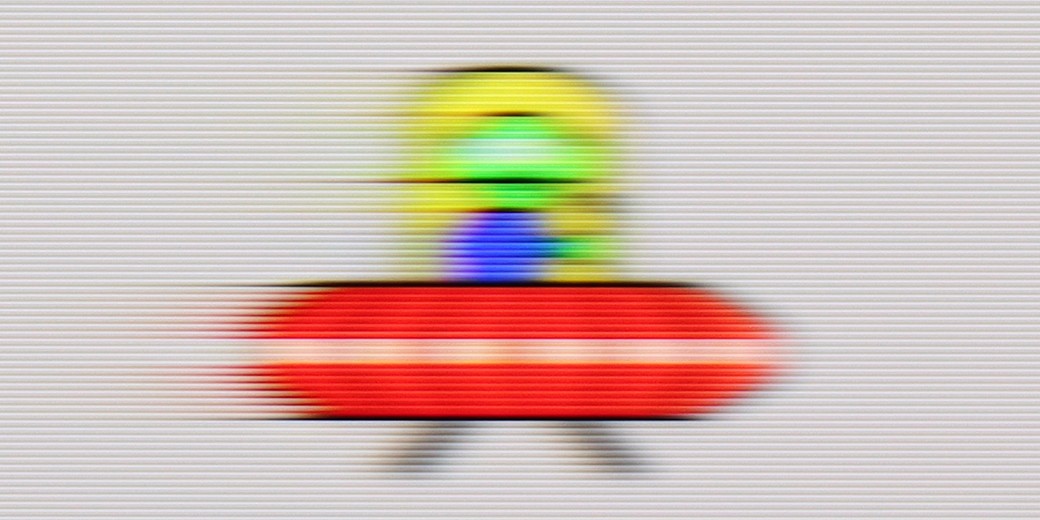
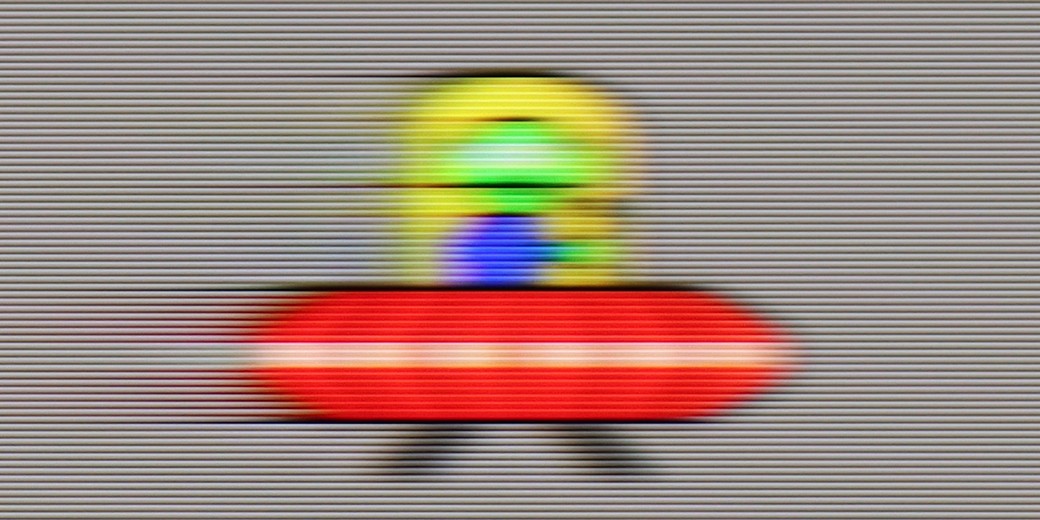
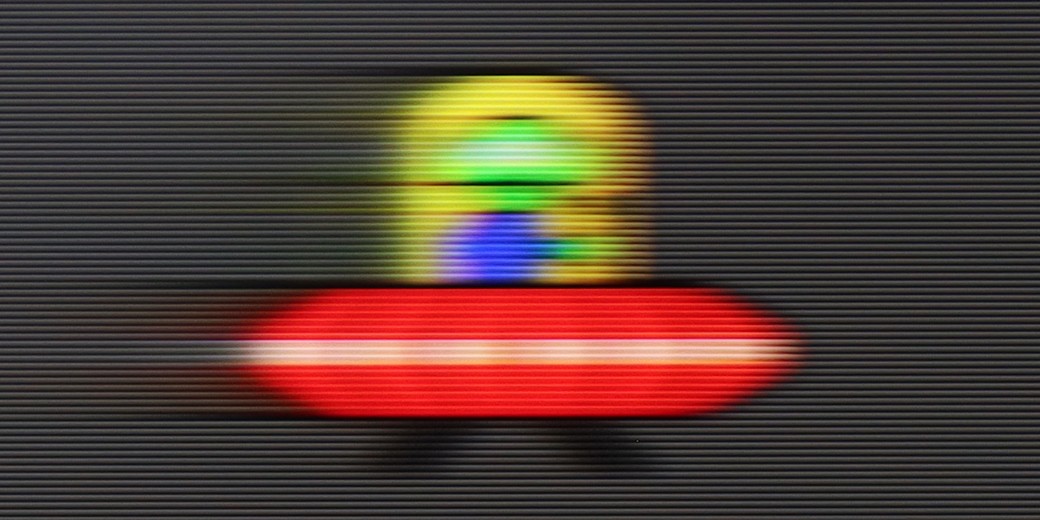
Blur (BFI function enabled):





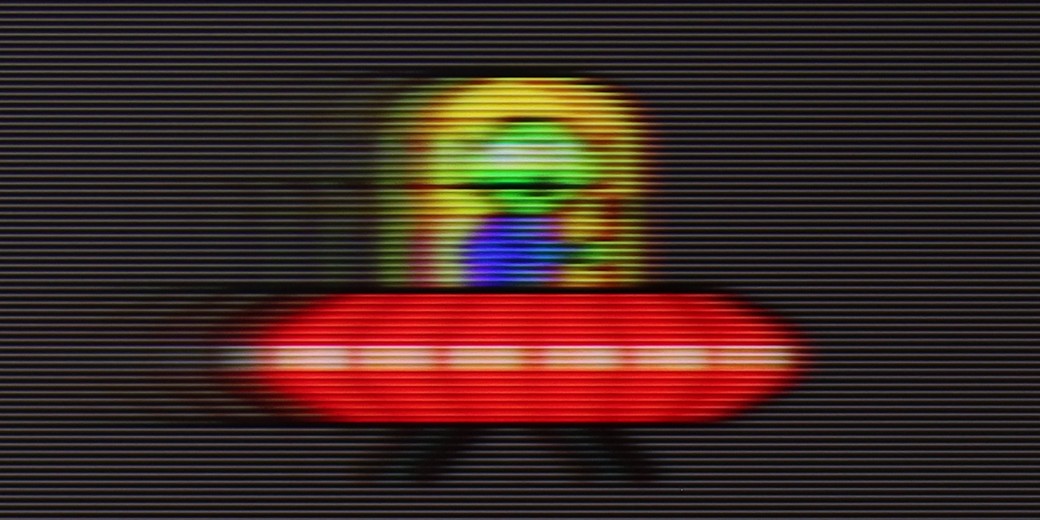
Smużenie ():
Smużenie (1080p 240Hz):
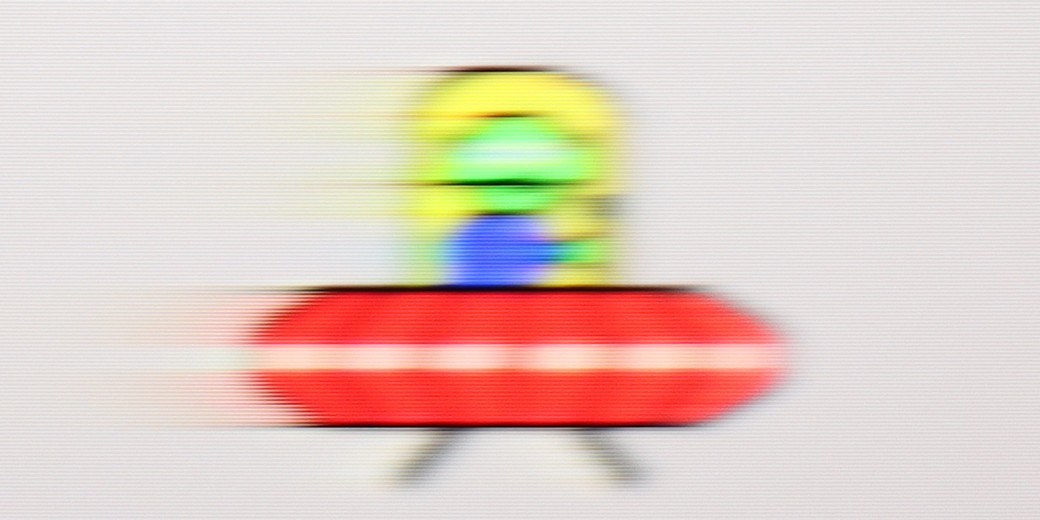
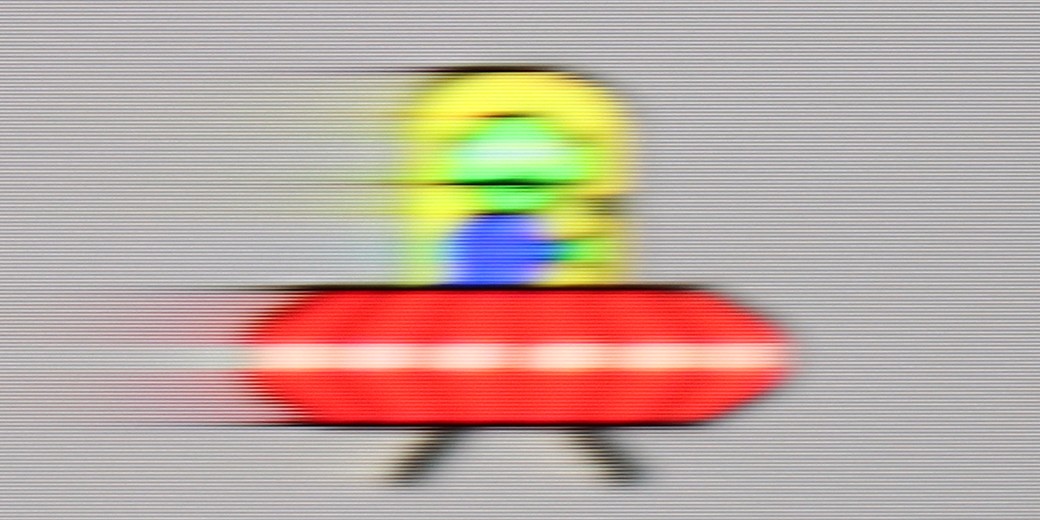
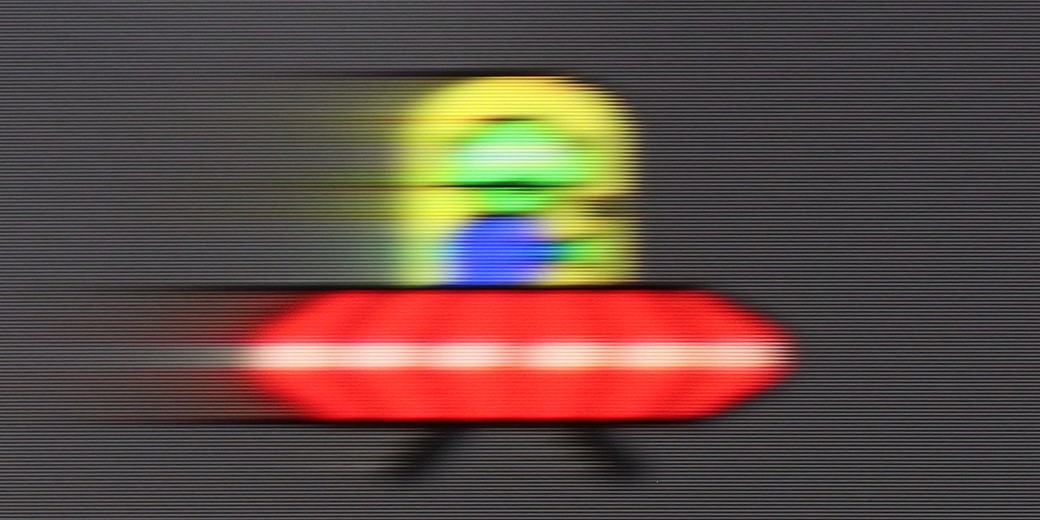
The maximum refresh rate that we can set on the LG B4 is 120 Hz. This is the absolute minimum for those requiring high image fluidity. The manufacturer has implemented a multi-step motion smoother called "TruMotion". It has been divided into two separate sliders adjusting the sharpness of moving images (De-Blur) and jitter (De-Judder). Both sliders can be set in the range from 0 to 10, with each degree affecting the level of fluidity, so everyone can find their golden mean.
The LG OLED B4 panel features an average response time of 0.1 ms (which directly results from our measurements), allowing for an incredibly clear image, unattainable for LCD televisions, whose response times can be as high as several milliseconds. This is clearly evident in the pictures from the "UFO Test", showing no trail following the object.
U7Q is indeed a very fast television, just like its more powerful version "PRO". At a resolution of 4K, it supports up to 144 Hz refresh rate, and if someone wants even more – in Full HD, you can achieve up to 240 Hz! This will mainly benefit PC gamers, but it is worth appreciating – it is a rarely seen feature in this price segment. Right from the start, it is clear that the U7Q has been designed with dynamic content in mind, such as games or sport. In films, we are not left "out in the cold" either – the U7Q offers an "Ultra Motion Smoothness" feature, where using two sliders you can adjust whether you prefer a smoother, theatrical image or something closer to a cinematic style with a visible film frame. It is good that, as with most manufacturers, we have a choice here as well and can adjust it to our own preferences.
Console compatibility and gaming features
10/10
8.5/10
- ALLM
- VRR
- VRR range40 - 120Hz48 - 240Hz
- Dolby Vision Game Mode
- Correct implementation of HGIG
- 1080p@120Hz
- 1440p@120Hz
- 4K@120Hz
- Game bar



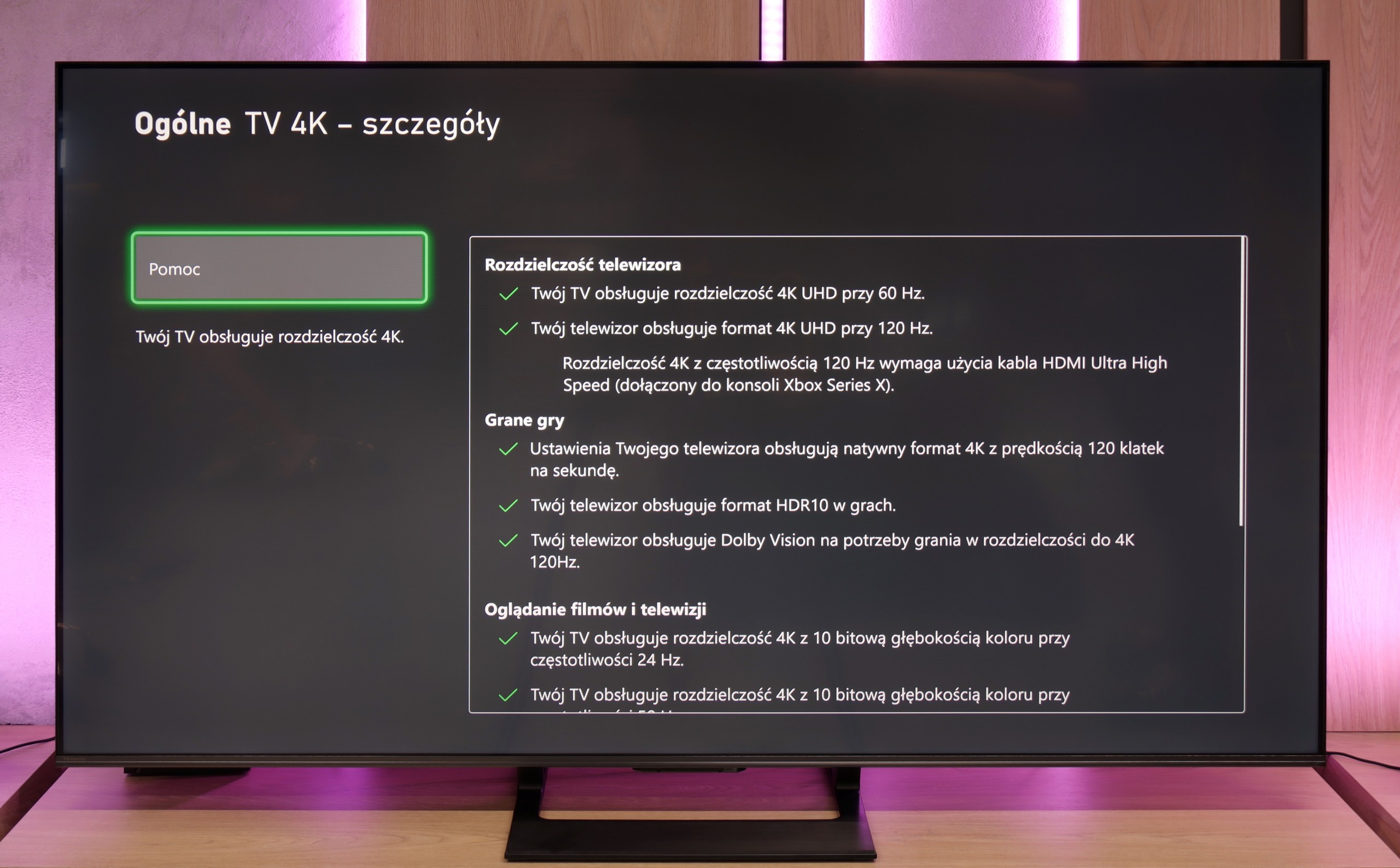



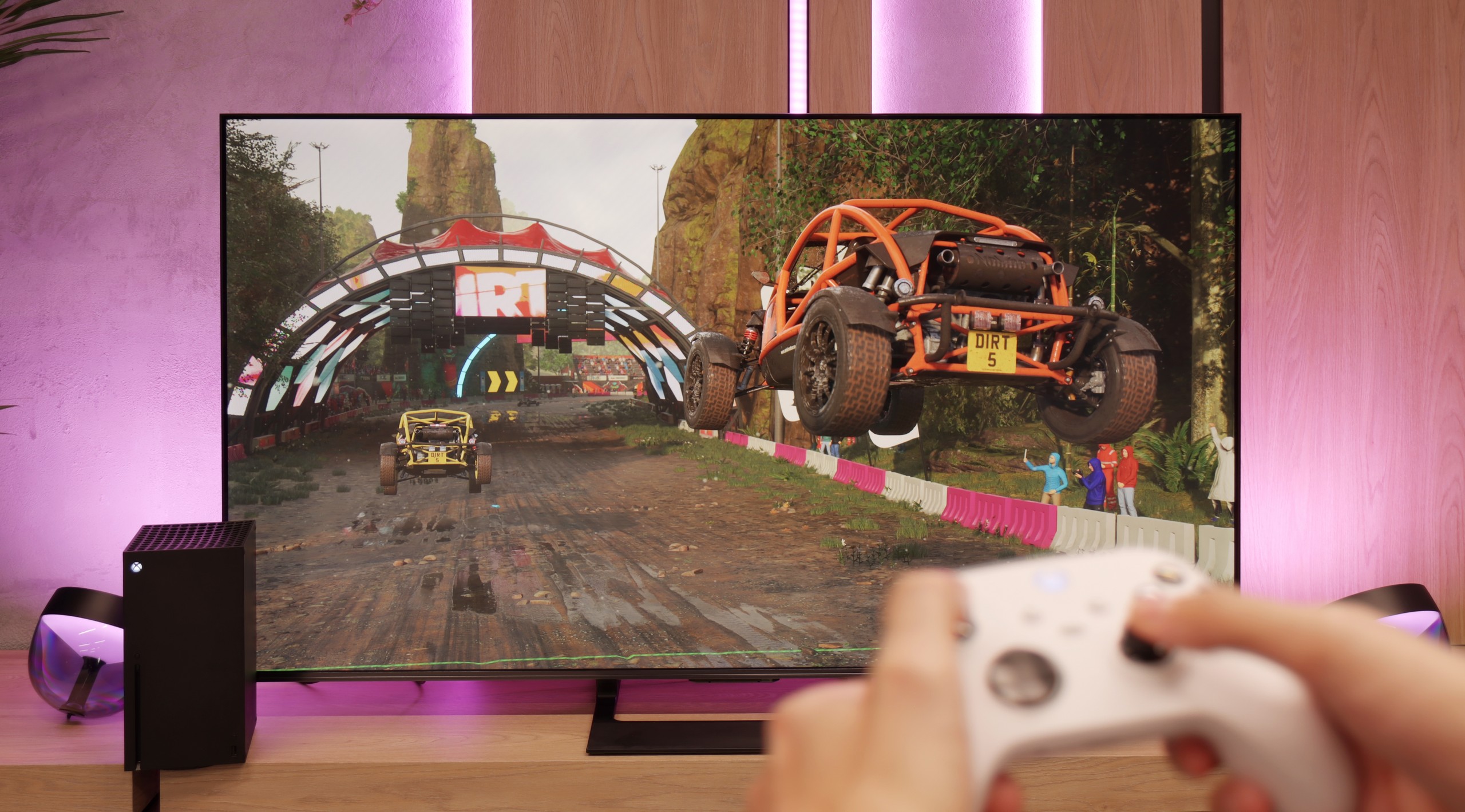
The LG B4 television is equipped with four fully-fledged HDMI 2.1 ports with a full bandwidth of 48Gbps. All features that are identical to this standard were activated without any issues, and throughout the entire testing process, they did not cause any problems. The combination of such extensive functionality and low input lag suggests that the tested television is truly made for gaming. This is not surprising, considering that the manufacturer has always placed great emphasis on this. Therefore, we can enjoy both the properly implemented HGIG mode and gaming in Dolby Vision with low latency. This pairing will certainly attract the attention of all passionate gamers for whom quality is paramount.
An additional standard in televisions from this Korean manufacturer is the implementation of GameBar, allowing for quick adjustment of settings "on the fly," without the need to exit the game. It also enables image adjustments for individuals with visual impairments, which is a very nice touch. Another important piece of information is that when VRR technology is enabled, we will not experience a drop in contrast. This is thanks to the construction of the panel and the lack of conventional backlighting. However, it is normal for shades of grey to flicker slightly; nevertheless, this is a characteristic feature of this function regardless of the manufacturer or television.
In summary: the LG B4, like all of the manufacturer’s OLEDs equipped with 120Hz panels and HDMI 2.1 ports, creates a harmonious whole with the console. In practice, this is a comprehensive television, and if we expect the highest possible efficiency in gaming, B4 will be the ideal choice.
The Hisense U7Q is a television designed with gamers in mind – and this is immediately evident from its gaming capabilities. It has practically everything you could wish for: variable refresh rate (VRR) – check, automatic game mode (ALLM) – check, and on top of that, high refresh rates of up to 240 Hz in Full HD and support for various resolutions, not just 4K. This is truly a great set of features that makes the U7Q perform well both in fast-paced first-person shooters on consoles and in more demanding titles on PC. Of course – as with most Hisense models – there is a lack of proper implementation of the HGiG feature. It's a shame because HGiG allows console brightness to be matched to a specific television, which in practice makes displaying HDR games according to the creators' intent much easier. Without this, you simply have to reckon with certain limitations in the final HDR image in games.
Input lag
10/10
9.7/10
SDR
HDR
Dolby Vision
Input lag for the LG B4 is at an incredibly low level in every scenario. Even the most dedicated gamers will certainly appreciate the very low input lag at demanding 4K 120 Hz settings with HDR, which is just 5 ms. It is also worth noting that the lag at these same settings, but with Dolby Vision HDR enabled, remains consistent, which is not as evident with the competition. Therefore, it deserves the highest rating and recommendation.
The input lag on the U7Q is really impressive. With 120 Hz content, we measured around 9 ms, and with 60 Hz – around 17 ms. These are exceptional results that make the television excellent for even dynamic games requiring quick reactions. It's hard to criticise anything here. Of course, as is often the case, the Dolby Vision mode in games seems to be a bit slower compared to classic SDR or HDR. This will be particularly noticeable for users of Xbox Series X/S consoles, which are the only ones supporting Dolby Vision Gaming. Fortunately, the input lag remains below 30 ms, so in practice, this is still an acceptable level even for more demanding gamers.
Compatibility with PC
7.6/10
8.6/10

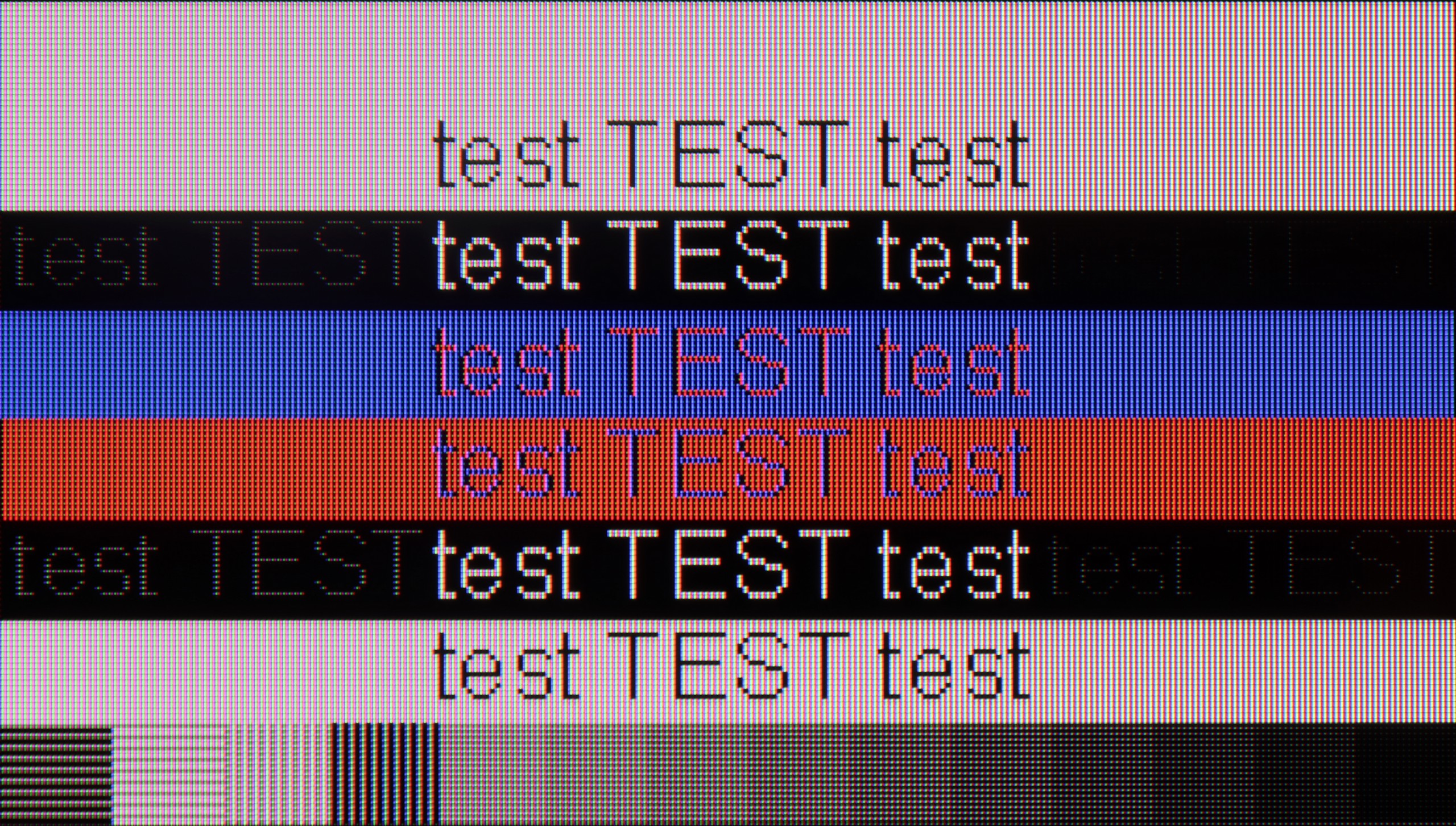
LG B4 combined with a PC performs excellently, thanks to a very low latency of just 13.5 ms, which is practically an instant response between the mouse, the eye, and the screen. An extremely important factor when working on a screen is primarily the readability of the text, which in the case of the tested television is very good. However, it is worth noting that to achieve sharp fonts, one must enable the passthrough option in the settings.
The RWBG pixel layout has no significant impact on the display of fonts or letters, which provides a considerable advantage over Samsung's QD-OLED matrices. Users of both Windows and macOS equipped computers are sure to be pleased with the performance on the screen of the tested television.
The U7Q communicates excellently with the computer. For gamers, this is great news – we have high refresh rates, low input lag, and G-SYNC support, making gameplay from a PC pure enjoyment. But the U7Q also performs well in everyday tasks. If someone uses the computer for word processing, browsing the internet, or office work – there’s nothing to complain about. The TV correctly handles chroma 4:4:4, so fonts look sharp and clear, without blurriness or odd contours. Both small and capital letters are simply readable – just as it should be.
Viewing angles
7.4/10
3/10
The undisputed advantage of OLED panels is their performance in the context of group viewing, that is, from various angles. LG B4 maintains very good contrast, colour saturation, and fidelity. Although this is not the result of organic televisions supported by MLA technology, one cannot say that anyone who purchased the device was dissatisfied with the results obtained. However, it should be noted that at sharp angles, a slight greenish tint can be observed. This is a characteristic feature of LG's WRGB panels, without the aforementioned micro-lens technology, and unfortunately, there is nothing that can be done about it.
The viewing angles on the U7Q are rather poor – this is simply characteristic of VA panel qualities. Directly in front, everything looks very good: blacks are deep, colours are saturated, and contrast is high. However, just moving slightly to the side causes the picture to start losing quality – colours become washed out, and blacks begin to resemble dark grey. Compared to televisions with IPS panels, the U7Q performs worse, although on the other hand, it makes up for it with better contrast and deeper blacks.
TV efficiency during daytime
5.7/10
6.2/10

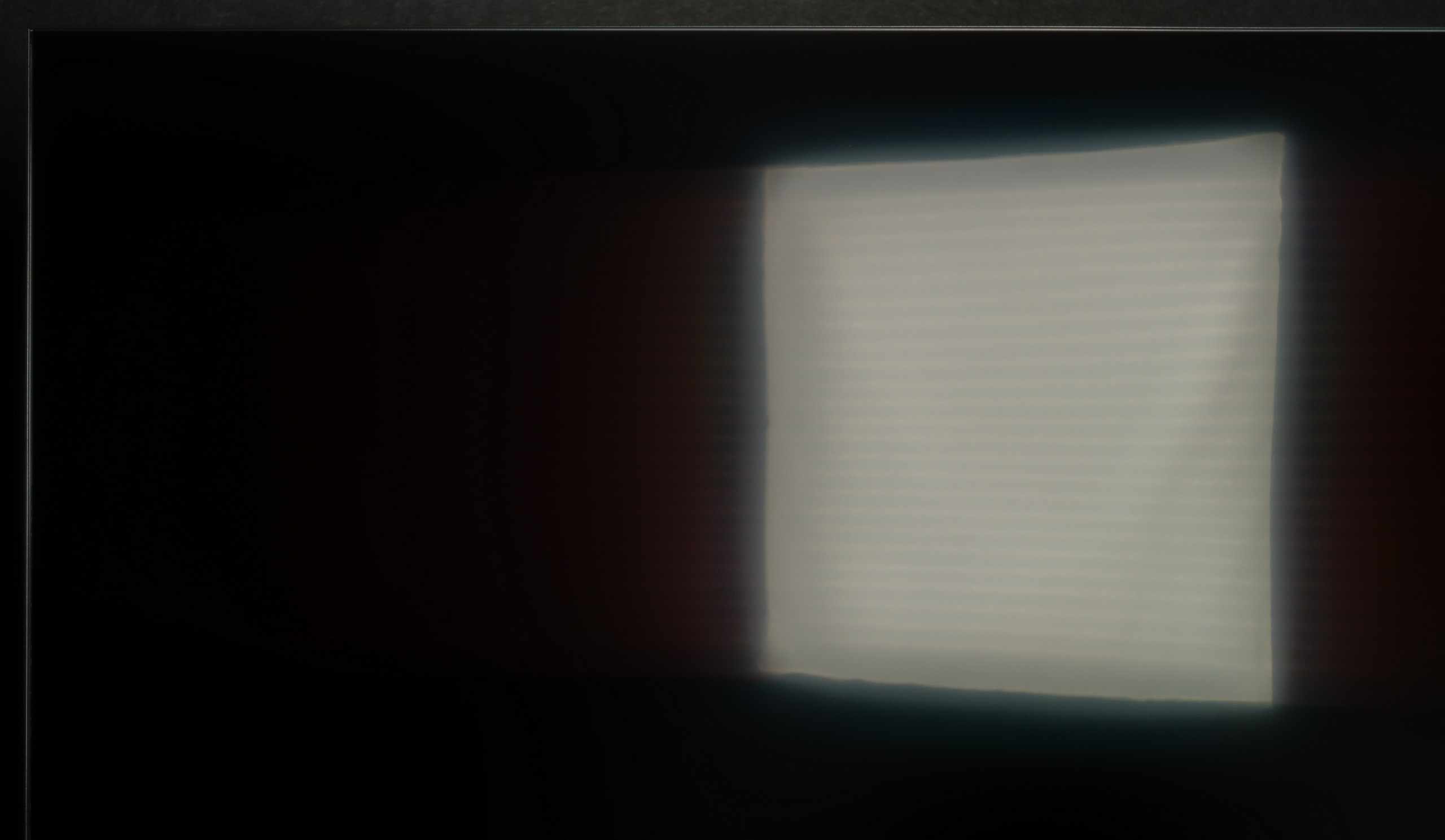

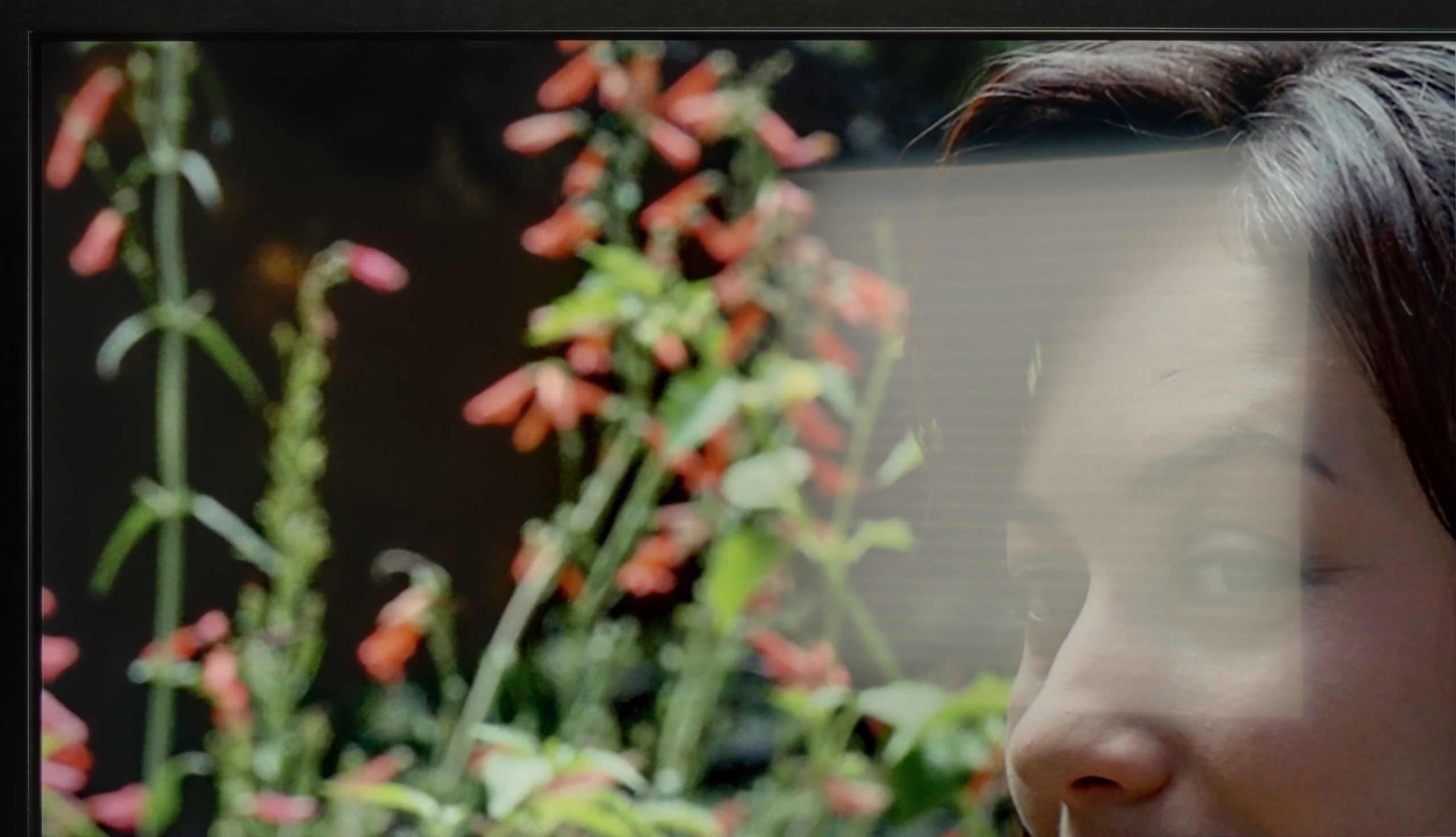
Matrix brightness
Average luminance SDR
Hisense U7Q: 519 cd/m2
LG 55 B4: 374 cd/m2
The maximum brightness of the television in SDR materials is 370 nits. For an OLED television, this is a very good result and allows for quite comfortable viewing during the day. It is worth paying attention to two things. The first is the rather mediocre handling of reflections caused by the satin finish of the panel, which means that direct light hitting the television will be quite obtrusive. The second issue is the brightness of the screen when filled 100% with white, oscillating around 260 nits, which is an excellent result, as until recently, OLED televisions in this price range could "boast" a brightness twice as low. Thanks to this, the conditions for watching, for example, winter sports will be very good.
The U7Q performs quite well in a sunlit room. The brightness in SDR mode averages around 520 nits, which practically means that even on a sunny day, it is easy to comfortably watch television – without the feeling that everything is drowned in reflections. Additionally, thanks to the satin coating on the panel, the television does a good job of suppressing reflections.
Details about the matrix
Subpixel Structure:
Panel uniformity:

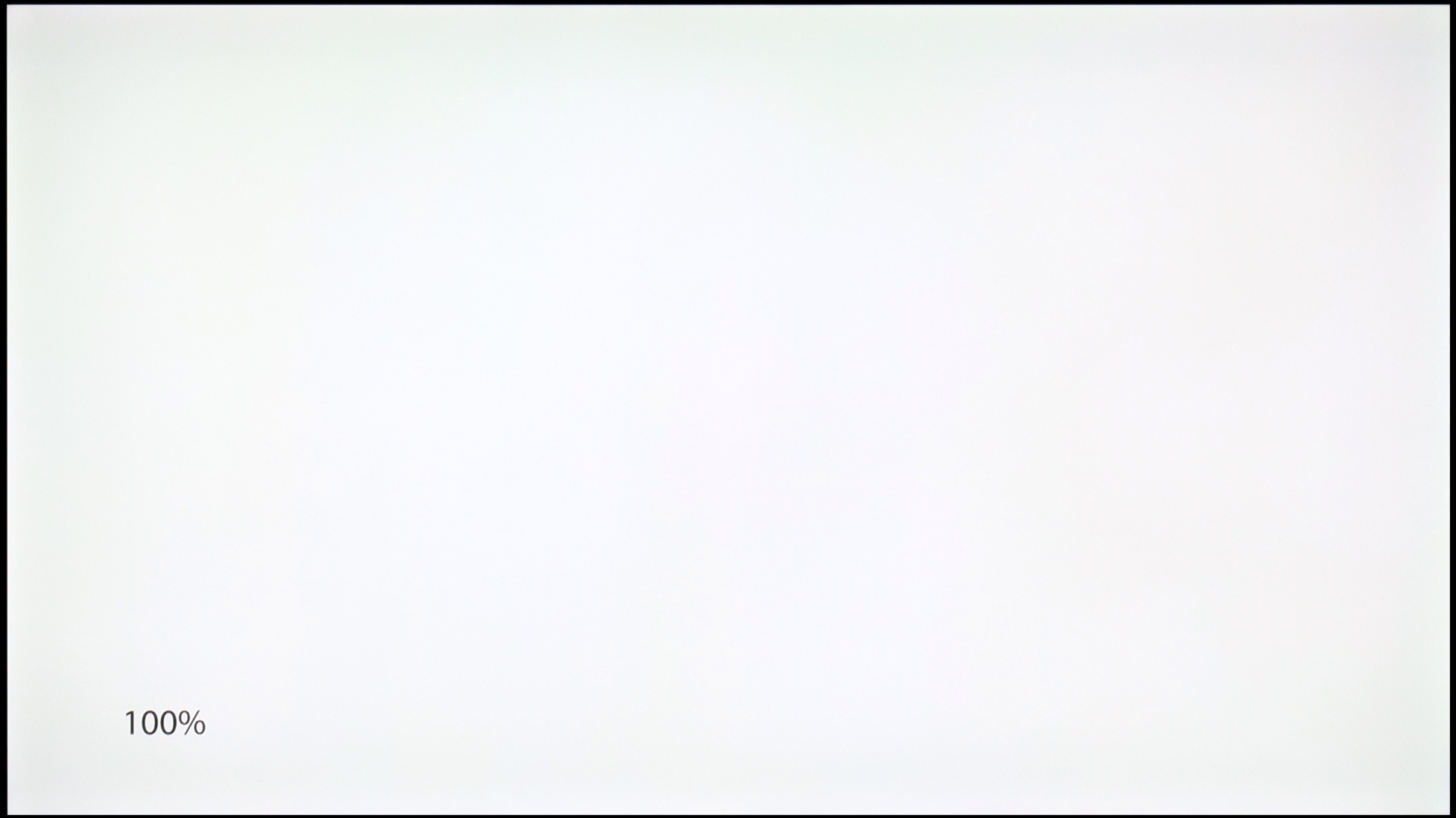
LG 55 B4
Hisense U7Q
TV features
9/10
8.9/10
- HDMI inputs0 x HDMI 2.0, 4 x HDMI 2.1 48Gbps2 x HDMI 2.0, 2 x HDMI 2.1 48Gbps
- Other inputsRCA (Chinch)
- OutputsToslink (Optical audio), eARC (HDMI), ARC (HDMI)Toslink (Optical audio), eARC (HDMI), ARC (HDMI), Mini-Jack (Headphones)
- Network InterfacesWi-Fi 2.4GHz, Wi-Fi 5GHz, Ethernet (LAN) 100MbpsWi-Fi 2.4GHz, Wi-Fi 5GHz, Ethernet (LAN) 100Mbps
- TV receptionDVB-T, DVB-T2, DVB-S, DVB-S2, DVB-CDVB-T, DVB-T2, DVB-S, DVB-S2
Classic features:
- Recording to USB (terrestrial TV)
- Recording programming
- Picture in Picture (PiP)
- RF remote control (no need to aim at the screen)
- Backlit remote control
- Teletext
- Audio only mode
- Possibility to connect Bluetooth headphones to the TV
- Possibility to simultaneously use Bluetooth headphones and the TV speaker
Smart features:
- AirPlay
- Screen mirroring (Windows Miracast)
- Wyszukiwanie głosowe
- Voice search in native language
- Ability to connect a keyboard and mouse


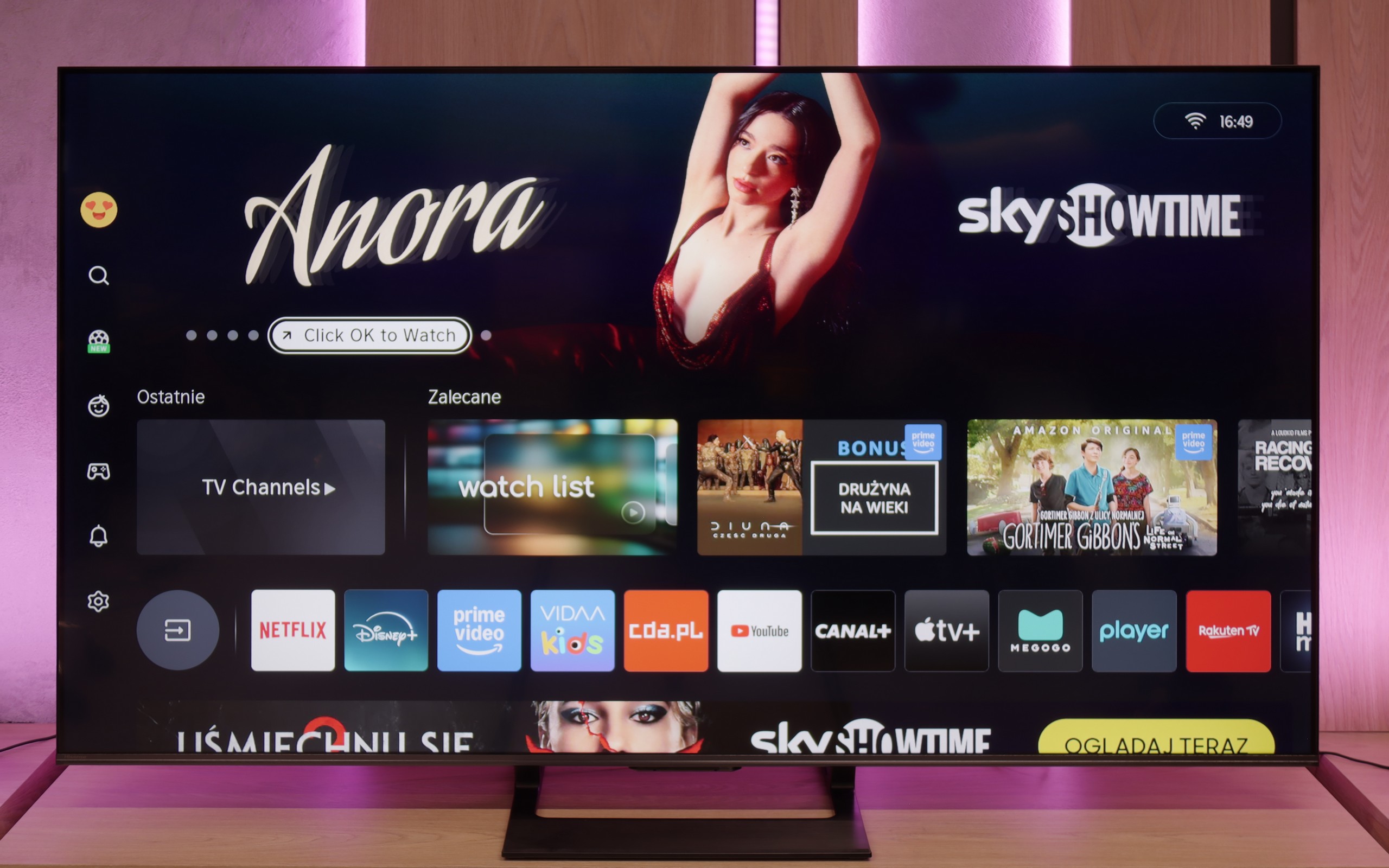

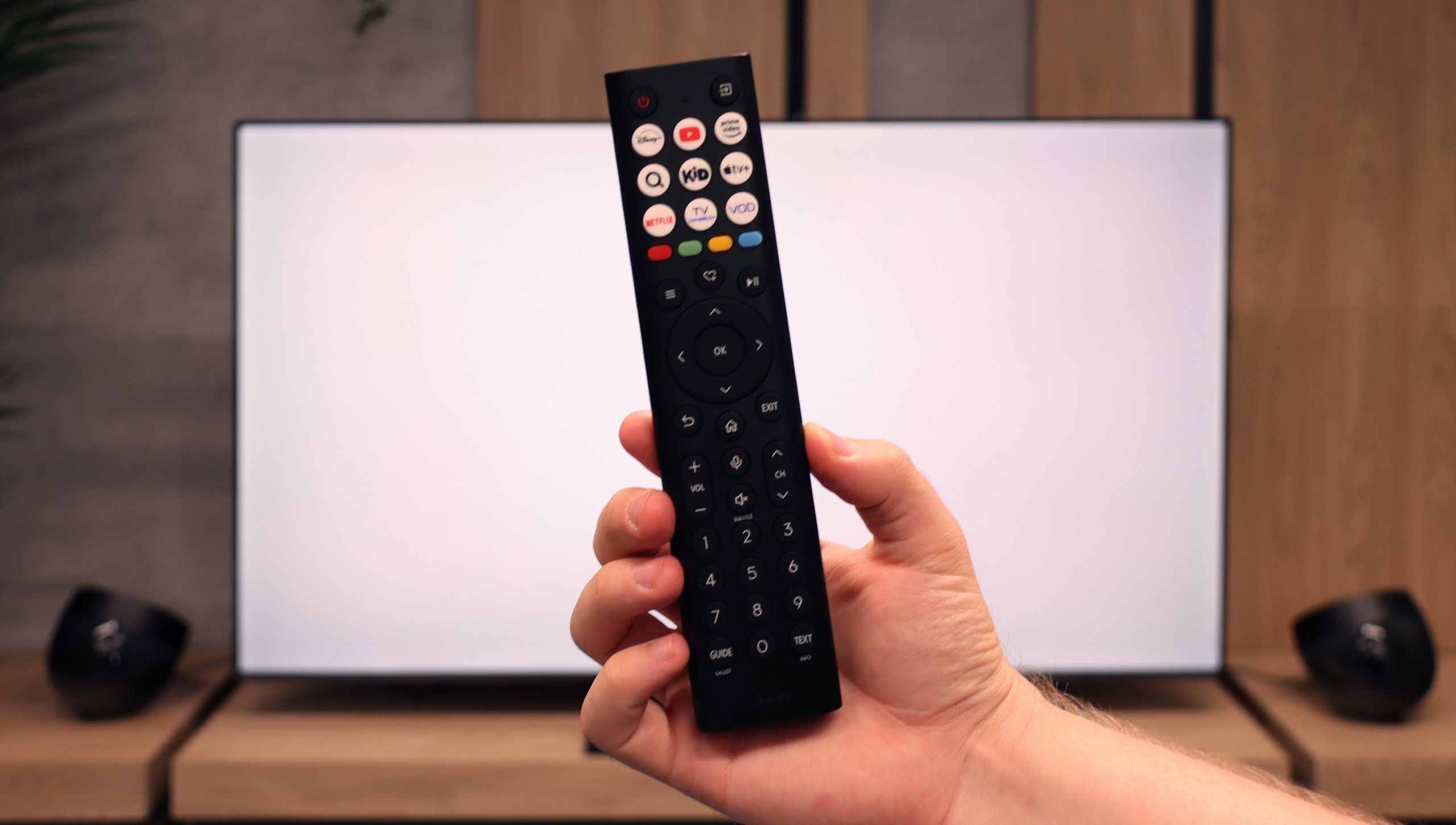
LG B4 uses the well-known proprietary system WebOS. The system offers practically all the most important applications, and those that are lacking can be counted on one hand, such as CDA or KODI.
WebOS also boasts a highly appreciated ability to perform operations using a cursor that appears when the remote control is moved. The convenience of such a feature is invaluable when entering queries or passwords for portals. WebOS, like most systems, also supports functions such as screen mirroring, AirPlay, voice search in Polish, and the capability to connect headphones via Bluetooth. On a more practical note, WebOS allows us to use both headphones and the television speaker simultaneously, which will certainly be a great help for those with hearing impairments. Among the more interesting features, particularly appreciated by sports fans, is the option to enable an alert for upcoming matches, ensuring that we never miss a broadcast. The home panel also deserves praise for allowing control of all smart devices connected to the home network. For example, the end of a washing cycle will be signalled by a notification in the top right corner.
In summary, the WebOS system, despite being less known and having certain limitations compared to Android TV, offers stable and fast operation and supports most functions that users may need. It is a solid solution for those looking for a simple and effective operating system in a television.
Classic features of U7Q
Hisense U7Q has quite a lot to offer when it comes to classic TV features. You can record programmes to USB, connect external devices via Bluetooth without any hassle, and the interface – such as the EPG – is clear and easy to read. It may sound like something mainly appreciated by seniors, but the truth is that U7Q has practically everything needed for watching traditional television. The only thing missing here is the PiP (picture-in-picture) feature.
Smart TV U7Q: Vidaa
As for Smart features, the U7Q runs on the proprietary VIDAA system. And it must be admitted – it operates really smoothly. Voice search in Polish? No complaints. AirPlay and screen mirroring? They work without any issues as well. Of course, one must be aware that VIDAA is a closed system, so – as is often the case – it lacks some popular applications, especially those related to music. Therefore, before purchasing, it is worth checking whether all the applications you use regularly are available.
Playing files from USB
8.5/10
8.2/10
Supported photo formats:
Maximum photo resolution:


The default file player in LG B4 definitely handles most images well, although the absence of a few equally popular formats is surprising. We can successfully play videos recorded in virtually all the most popular formats, including Dolby Vision. The only codec that LG B4 will not play is H.266 VVC, although this is currently rather unused. However, it is worth noting the supported image formats, of which there are only two: JPEG and PNG. Users of Apple devices may feel disappointed by the lack of support for the HEIC format, which is the default format when taking photos. The remedy for this is to use the built-in AirPlay feature. We will also mention the lack of support for TXT subtitles.
The built-in player in the U7Q fully meets the needs of most future users. The television handles Polish characters effortlessly and supports most popular video, audio, and image formats. If we had to nitpick, it would only be about the limited support for certain image resolutions – there are instances when files from a camera are not displayed correctly. So it's worth keeping this in mind if you plan to present photos straight from a DSLR or phone.
Apps
8.7/10
7.7/10














































Sound
7.1/10
7.2/10
- Subjective sound quality:7.1/107.2/10
- Dolby Digital Plus 7.1:
- Dolby True HD 7.1:
- Dolby Atmos in Dolby Digital Plus (JOC):
- Dolby Atmos in Dolby True HD:
- DTS:X in DTS-HD MA:
- DTS-HD Master Audio:
The audio system built into the LG OLED B4 can be considered quite good. We can say that it performs well for its price range. The bass is quite noticeable, but does not overpower the other frequencies. It can be said that the sound is fairly well balanced. We believe that those opting for this class of display are, or will be, in possession of an appropriate audio system. Therefore, the presence of DTS-HD Master Audio and Dolby Atmos codecs is not insignificant.
Sound is one of the bigger advantages of the U7Q. The television sounds really pleasant – there is a slightly noticeable bass, good tone balance, and definitely something more than just for "daily news watching." You can easily play music on it and simply sit back and enjoy the sound – of course in an entertaining form, not an audiophile one 😉. Full support for the most important audio codecs also deserves a big plus, as they worked flawlessly. A small exception is Dolby Atmos in TrueHD version, which didn’t fully play when connected to the home cinema, so if someone uses this format – it’s worth keeping in mind – it might be a software issue.


